A beautiful tropical island in the warm Indian Ocean. Mark Twain’s statement that Mauritius was the prototype for paradise is not far from the truth. White beaches with perfectly fine sand, coconut palms overhead, a clean turquoise ocean full of colorful coral and fish of all shapes and sizes, and also scorching sun overhead. That is Mauritius. However, this island may not only be a symbol of luxury hotel holidays; it can also be approached from a slightly more adventurous and cheaper perspective while thoroughly exploring it. For nature lovers, it offers a lot of hills, waterfalls, several lakes, and plenty of interesting jungle trips, most of which are adventurous without a guide. But an interesting experience can also be a trip by local bus or dinner on the street. Mauritius offers amazing travel adventures if one knows where to look for them.
Before travel – what to expect
Mauritius is a beautiful tropical island in the warm Indian Ocean. Mark Twain’s statement that Mauritius was the prototype for paradise is not far from the truth. White beaches with perfectly fine sand, coconut palms overhead, a clean turquoise ocean full of colorful corals and fish of all shapes and sizes, and the burning sun overhead. That’s Mauritius. However, this island doesn’t have to be just a symbol of luxury resort vacations. You can also approach it from a more adventurous and affordable perspective and travel it thoroughly. Nature lovers will find plenty of hills, waterfalls, several lakes, and plenty of interesting jungle excursions, most of which are adventurous without a guide. But a trip on a local bus or dinner on the street can also be an interesting experience. Mauritius offers amazing travel adventures if you know where to look.
Since Mauritius is located on the southern hemisphere, relatively far from the equator, it is not ideal for visiting all year round. The best months to visit the island are October to January. These months are warm with little rainfall. In February, the cyclone season begins. During this period, occasional showers and cyclones occur. You can, of course, spend the entire 14 days of your vacation with beautiful weather, but if a cyclone comes, it will bring strong winds and rain. Several days can be closed, without electricity, even flooded. In June, July, and August, there is winter on the island. The weather will be dry and cooler (even 16°C), and the nights can be particularly cold. The sea also cools down from 28°C to 22°C. In September, the warmth returns to Mauritius – summer. From April, May, June, the island slowly cools down, and rainfall subsides.
Before traveling to Mauritius, you have no mandatory vaccination requirements. However, since it is in Africa, it is advisable to undergo standard traveler vaccinations such as hepatitis A and B, typhoid fever, and check tetanus vaccination.
For a classic tourist trip of less than 3 months, you do not need any visas. At the airport, you will only get a passport stamp. They may ask for the name of the hotel where you will be staying, or see the reservation. They may also ask you to provide a return ticket or proof of sufficient financial resources. Your passport must be valid.
Transportation
Traveling to Mauritius is an adventure in itself. You drive on the left-hand side of the road, like in Britain. The traffic is a bit crazier and less predictable, but it’s not complete chaos and anarchy. Although it may not seem like it at first glance, the drivers are mostly safe.
When you hear honking, it usually doesn’t mean “get out of the way,” but rather “watch out, I’m coming.” Drivers honk for safety reasons, to be seen and heard.
There are several modes of transportation available that you can use.
BUS
Bus transportation is the cheapest, but most time-consuming. The buses are older, but functional. Sometimes they travel at 10 km/h and other times at 90 km/h, both within and outside the city. You never know in advance how long the journey will take.
There is an offline app and website where you can find out which bus goes where, but don’t rely on the timetable. Buses go whenever they want. Just go to the station and wait or ask the locals right there.
Prices range from a few rupees to 34 rupees for a one-way bus ride. They won’t charge you a higher price per person. However, the price is only for one journey, so if you have to transfer, you will have to pay again.

In the bus, there is a money collector who will come to you once you sit down. You tell him where you’re going and give him the money, and he’ll give you a ticket and change. They don’t like banknotes larger than 200 rupees. If you’re not sure how to get to your destination, ask for help. Locals will be happy to assist and advise you. If they see that you’re a tourist, they may even tell you where to get off. If you don’t know the name of the bus stop where you want to go (which you usually won’t unless it’s the name of a city), show the collector or driver a map, and they will gesture whether they’re going in that direction or not.
Expect the bus to run from early in the morning, usually from 5 am, and end early too, running until a maximum of 7 pm, but only for the main routes. The bus is also the cheapest way to travel to and from the airport. It’s not necessary to take a taxi. When you leave the airport, head towards the parking lot, where you’ll find the bus stop. Simply ask each bus driver who arrives if they’re going to your destination.
There are several companies here that can take you. You can recognize them by the size and color of the bus. Large buses are blue and red. The blue ones are provided by the government, and the red ones are private. They usually run different routes. There are also white minibuses. These usually have “CONTRACT BUS” written on them and a label in parentheses. The labels are “EMPLOYEES,” which is a bus hired by a company to transport employees to and from work, and “SCHOOL,” which transports children to school. There is also a “TOURIST” bus that you can rent for a trip or by arrangement. Sometimes you’ll also see a “CONTRACT BUS” that functions like a regular bus. Occasionally, you’ll see large buses with the “CONTRACT” label that operate in the same way.
The last option for public transportation is an auto-bus, which is a taxi that carries people at bus prices. It’s good to ask about the price before boarding. They’ll shout out the name of the place they’re going and “same as bus.” However, the price is usually slightly higher, especially if they see that you’re a tourist. These are taxi drivers who are driving for someone or returning home from work and don’t want to drive empty.
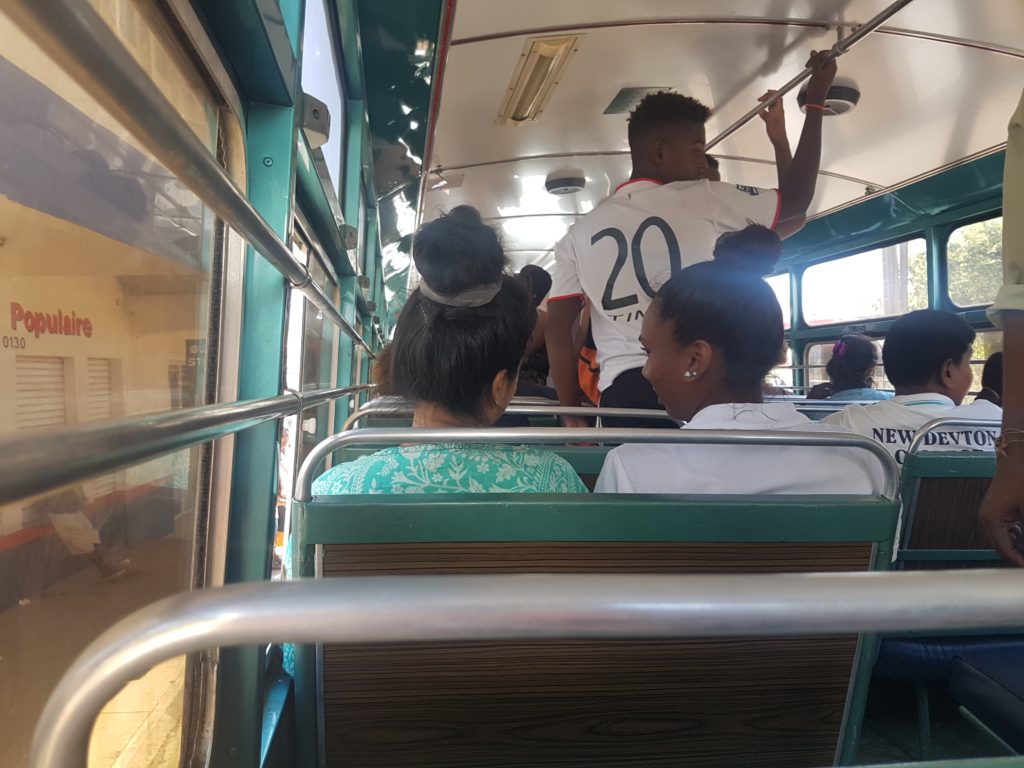
TAXI
Here, as everywhere else, you will encounter taxi drivers who will try to get the maximum amount of money out of you. If you have to use a taxi, always negotiate the price. You will often hear honking and see flashing lights. That means someone wants to take you. Be careful. Taxis are relatively expensive here, but you can also negotiate the price down to the level of the buses if you insist and the taxi driver has nothing better to do. They often stop and offer a “special price,” which means you will pay 100 rupees for 2 km. Just say “the bus is cheaper” and you will immediately discuss a different price. This works mainly in the Blue Bay area.
You can find a taxi practically anywhere and anytime. Sometimes taxi drivers will drive you “home” for the same price as a bus, but they will try to sell you a trip, accommodation, an event or transportation for another day while you are in the car. Usually overpriced. When you agree on a price with a taxi driver, make sure you have the exact amount or that you have been given the correct change. They don’t always like to give back the change.
Hitchhiking
Cheaper than the bus is hitchhiking. Given that the locals are friendly, just wait a while and someone will stop.
If you are stranded somewhere, for example at the beach and the last bus has already left, definitely ask people in the car park if they could give you a lift. It’s a great opportunity to meet other tourists or, in the best case scenario, locals who can advise you where else to go. Especially problematic transportation by bus is from the beach areas in Le Morne. However, there are many people who wait until sunset and then drive home in semi-empty cars.
We definitely recommend trying it. It’s an adventurous way of traveling. Of course, as everywhere in the world, a little caution is needed, you never know who you might meet. If you can, don’t hitchhike alone at night in remote areas.
Car rental
If you decide to rent a car, you will need some courage, orientation, and assertiveness. For the inexperienced, Mauritian traffic can be stressful. However, everything can be managed over time. Don’t forget to bring a navigation system. Apps are discussed in another chapter.
Having your own car is definitely a big advantage. Instead of spending 2 hours on a bus that stops every few meters, you can spend 20 minutes on the road and reach your destination. In one day, you have a chance to visit many more places than if you were on a bus. Parking is free outside Port Louis, where you pay 10 rupees per hour. However, it is not recommended to drive here because of the heavy traffic. One can easily lose their nerves here.
Rental prices depend on the size of the car, the type of transmission, and the location where you rent the car. If you are a good negotiator, you can rent a car for as little as 800 rupees per day. If you know any locals, they can recommend places to rent a car, or search on Facebook where locals offer their cars. Usually, they want you to rent the car for several days, otherwise, they will increase the price. The price for 2 days can be around 1100 rupees. It always depends on how you negotiate. Therefore, it is worth considering whether to spend a considerable amount of money on renting a car or save money and sacrifice time. The ideal solution is a compromise – rent a car for several days and then use the bus for the following days. If you plan to spend the whole day at the beach, the bus is a good choice.
Gasoline is around 47 rupees per liter, and diesel is around 37 rupees (2018). Fueling is equally expensive all over the island because the prices are determined by the state.

Other transport
Scooter
If you are alone or with a maximum of two people, you can rent a scooter. You won’t be able to fit a lot of luggage on it, but it’s enough for getting around. Rental shops are mainly available in the north and renting one will cost you around 500 rupees. It’s not like in Asia where you can find scooters everywhere, fix them anywhere, and everyone has one. Scooters are less common here, cars are more popular. This mode of transportation is probably the most dangerous due to the crazy driving of car and bus drivers.
Bycicle
This option is suitable in combination with a car, when you can go on trips to nature on less busy roads. It is also suitable for transportation to the beach or the city. As the main means of transportation, a bike is not ideal, the island is too big and riding on a busy road in the heat is not pleasant. You can rent a bike more from locals than from rental companies.
Walking
Locals almost don’t know about walking, so when you ask for directions, they will always tell you to take the bus, even if you have to wait for 15 minutes and then take a detour and transfer. Sometimes it’s better to walk according to the map.
Food

If you decide to go for the cheapest option, which is food stalls and street food, you can eat for 30-70 CZK. Unfortunately, most of the food is fried and very similar everywhere. Fortunately, the food is not spicy, but chili sauce is always served separately for those interested. Food can be found most often directly on the street, at beach stalls, from street vendors on bicycles, in small dirty buffets, or in vans directly on the road, where sellers have a large pot of rice in the trunk and sell food in bowls to passers-by or travelers (for example, in Quatre Bornes).
The traditional dish in Mauritius, which is found everywhere, is fried noodles with meat (usually chicken) and eggs, fried rice, gyros, hamburgers, and also traditional Muslim food called Briani. Briani is cooked rice with a brown sauce served with chicken, beef, or fish. White baguettes, which are the same everywhere, tropical and imported fruit, lots of local vegetables, various fried vegetable balls, fried zucchini, or eggplant coated in egg, are also available. Coconuts are a must, but they are not the cheapest in Mauritius, even though they grow on every corner. The price for locals is around 30 CZK, tourists can pay up to 60 CZK per piece.
In Mauritius, it is not advisable to buy cheese and ham because they are relatively expensive and imported. It is better to use local ingredients and dishes. Unfortunately, it is necessary to buy or boil water. Even the locals do not drink it from the tap. A large bottle of water (1.5 L) costs around 13 CZK in the supermarket, around 20 CZK on the street, and even around 30 CZK on the beaches.
If you don’t need to save money on food, Mauritius offers a wide range of restaurants and luxury establishments where you can find a much larger selection of meals, including European-style cuisine. It is not a problem to pay 200-500 CZK for a regular meal in a tourist restaurant.
It is necessary to remember that food cannot be found on every corner in Mauritius. There are areas where you need to bring enough water and food with you. Examples include Le Morne or most areas in the mountains and national parks, roads to waterfalls, etc. If you are lucky, you can find fruit in the forest right on the tree – mango, papaya, jackfruit.

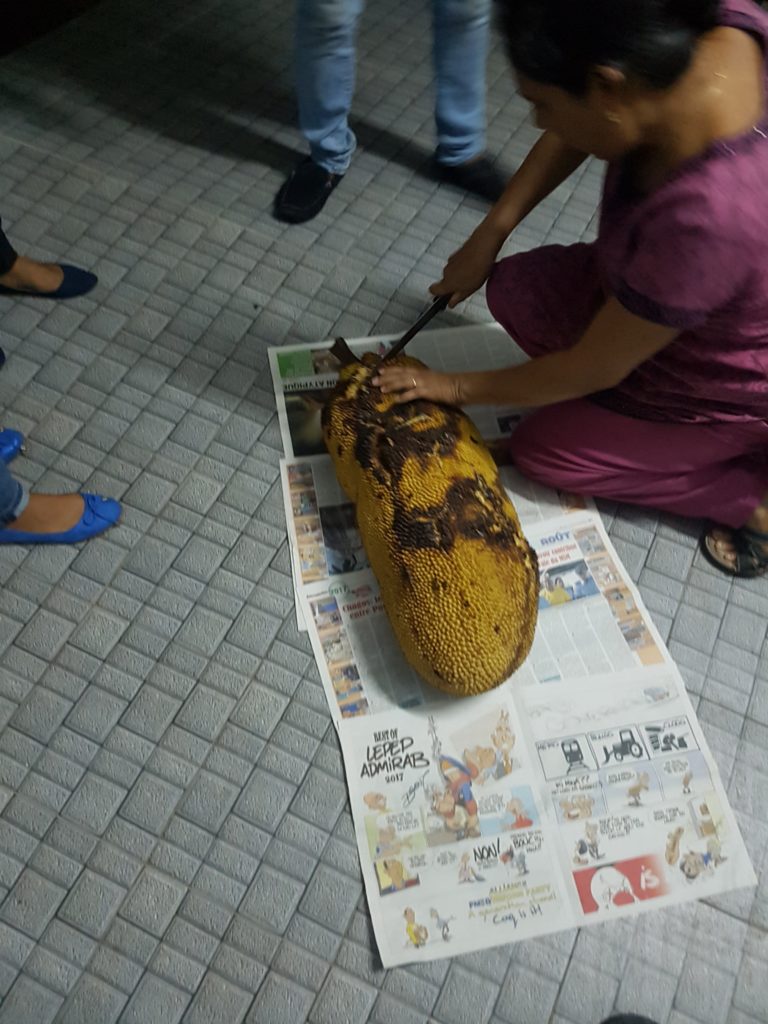
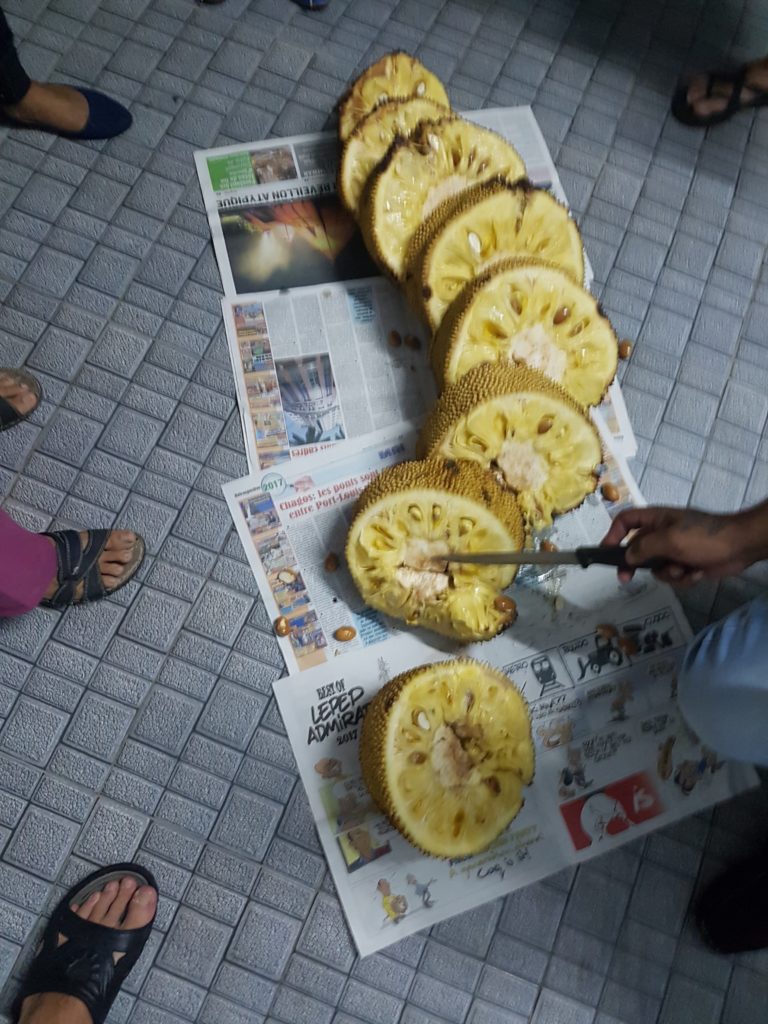
Accomodation
Mauritius is a relatively small island, so there’s no need to move around every day. The whole island can be easily explored from one base station (or two, or three). If you want to travel a lot, it’s ideal to choose accommodation in the center (Curepipe Fenix, Rose Hill, or Quatre-Bornes – buses from these cities go to all parts of the island). You can visit a different part of the island every day. However, if you prefer to relax on the beach, it’s better to find accommodation right on the beach.
A popular and affordable destination is the Flic en Flac area. Then there are beaches in the north like Trou aux Biches, Mont Choisy, or Grand Baie, which has a lively nightlife. For luxury lovers, there’s the Le Morne area, where there are luxury hotels with beautiful beaches and a sea full of coral (but of course, you can get to the beach from any accommodation). A few days before departure, it’s a good idea to stay in the Blue Bay and Mahebourg area. There’s still plenty to discover in this area and it’s only a few kilometers to the airport.
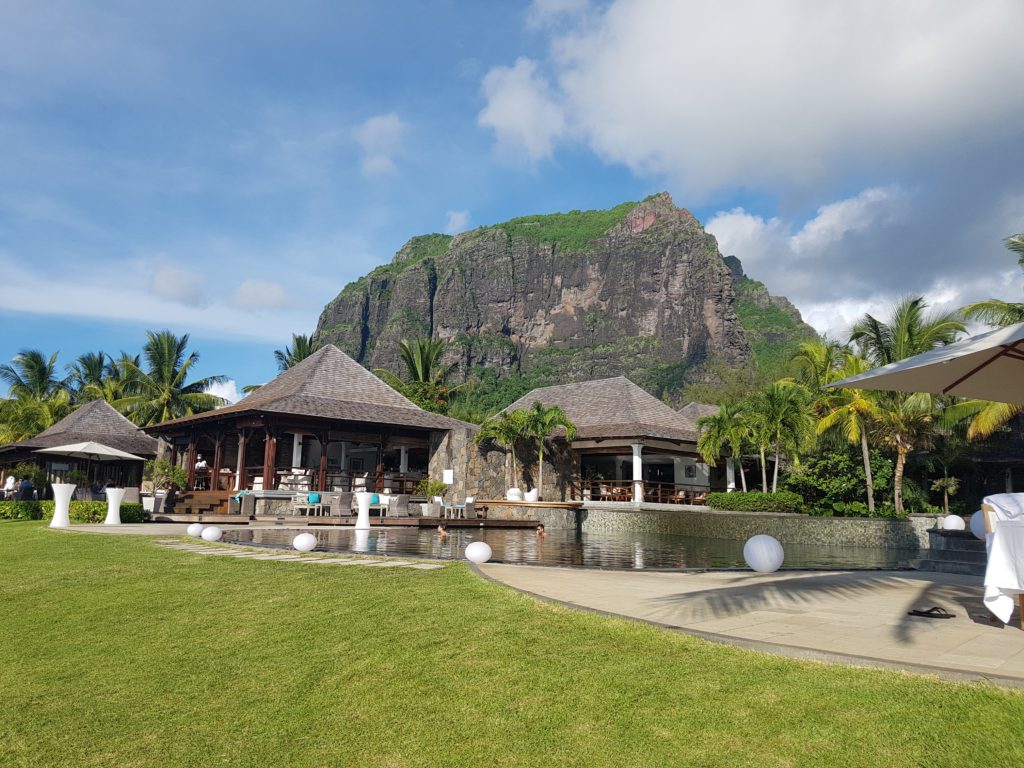
Variants
Accommodation can be found through Booking.com. Prices can vary depending on the location. You can find relatively cheap accommodation for a few hundred Czech crowns, but in luxury areas (Le Morne), it is not uncommon to pay 20,000 CZK for one night. Unfortunately, cheap accommodation in this area is hard to find. Overall, prices per night range from 250 CZK for a double room to 60,000 CZK.
Another option is Airbnb. Accommodation through Airbnb is slightly cheaper than through Booking, but it often requires a longer stay, such as a week. There are also additional fees for cleaning and intermediation, so it’s not worth moving every day.
Another option for low-cost travel is Couchsurfing, which also works here. A European traveler may be surprised by the locals’ overly friendly nature. The locals are happy to advise, share information about their culture and life on the island, and nothing is a problem for them. However, it should be noted that accommodation with locals is not among the cleanest or most modern.
The last option is camping. It is possible to pitch a tent for free on public beaches (such as Albion, La Cambuse). There are even showers and toilets available, which close at 7 pm. It is possible to arrange with the service that takes care of the place to leave the key as a deposit. There are also food stalls available. Locals love camping here, especially on weekends and holidays when they come with their families for a week of camping.
Places to visit
Mountains
All the peaks mentioned here are easily accessible, so no climbing equipment is needed. It’s best to start as early as possible, not only because it’s not as hot, but also because of the good visibility. Especially in summer months (December – March), there are often thunderstorms and water evaporates from the forests, or clouds that cling to the hills and there isn’t much to see in the afternoon. Be sure to pack enough water, at least 1.5 liters per person. It’s not always possible to buy something to drink right after descending from the hill. Also, a head covering and insect repellent are suitable, as mosquitoes are everywhere. Food is also suitable, as even a seemingly short hike can be prolonged. In high temperatures and significant humidity, every trip is demanding.
A great advantage of Mauritius is its non-toxicity. You won’t find any dangerous animals in the wild here, and even the snakes that live here are not poisonous. So you can wander through the jungle or climb mountains without any worries. However, you need to be careful in the sea, where life is very diverse and you can see poisonous snakes or fish.
No entrance fee is required for any mountains or national parks, and in some places you only need to sign a visitor book.
Piton de la Petite Rivere Noire (828 m above sea level)
The highest mountain on the island, which rises in the Black River Gorges National Park, from which there is an amazing view of a large part of the island, is definitely worth a visit. The easiest way to get there is by car. You can drive to the Gorges viewpoint, where you can see a beautiful gorge all the way to the coast, then head west on the asphalt road for about 100 meters where you will see a sign for the highest mountain. The road is good, and trekking shoes are necessary when it’s wet as there may be mud on the road. The road alternates between uphill and downhill almost to the end. Occasionally, you can see some views between the trees along the way. At the end, you will find a rope attached, which will come in handy when climbing to the highest point. The rope replaced the chain, from which only a piece remains here, but it is also useful.
The second possible ascent is from the village of Chamarel. The road leads from the Chamarel viewpoint, but you can’t leave the car there. You can leave it further towards the center of the village. The climb is more challenging and steeper, but also manageable.
Some maps say that it’s also possible to climb to the peak from the national park, but there is no turnoff anywhere, and the route would be the most demanding.

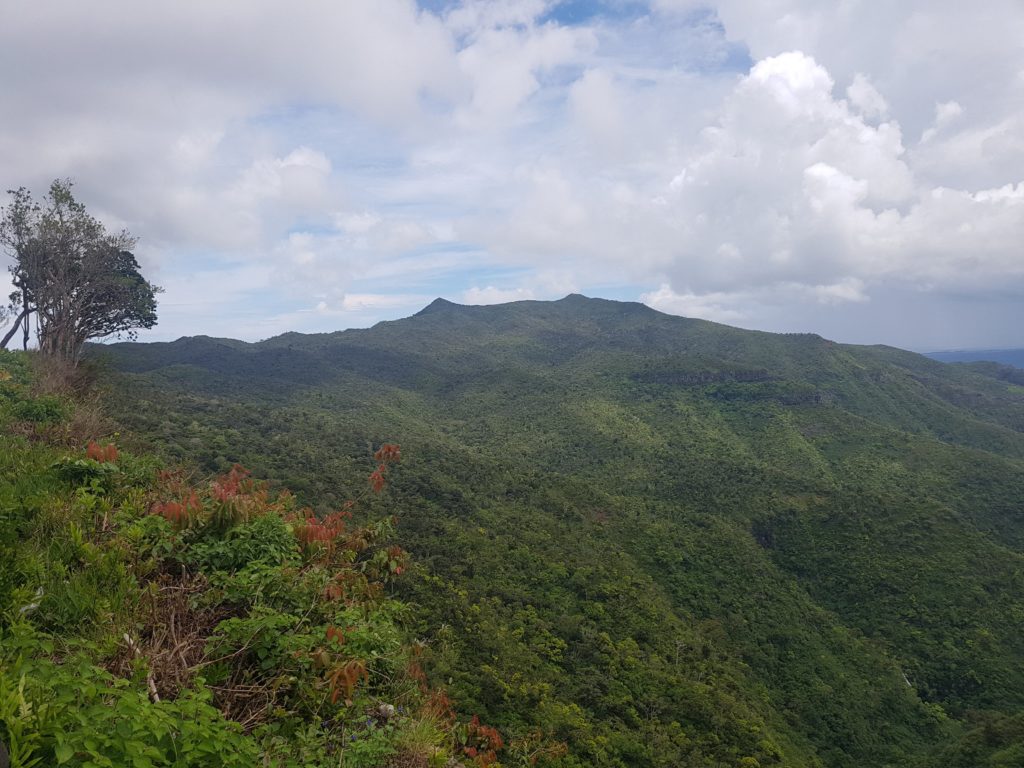
Le Pouce (820 m above sea level)
A mountain outside of Port Louis shaped like a thumb, which offers a beautiful view of the city and, at the same time, of the plateau in the center of the island and the other villages in the valleys. There are two ways to climb it.
The easier ascent is from the backside, between the Moka and Saint Pierre areas. If you want to get here by bus, you can take a bus to Moka and ask to go to this mountain. They will direct you to the right bus and stop you at the turnoff. The climb is approximately from 370 meters above sea level, but you will face a steeper ascent accompanied by a stream on the way and other small pitfalls.

The second access road is from Port Louis, in the Tranquebar area, which you can reach by bus. You start practically at zero altitude, so be prepared for a long uphill climb. It’s not too steep, but very long, so you may feel like the ascent is endless at times. Along the way, you will be surprised by several waterways that cross the path, even a few meters wide.
Both routes share a junction at the summit. The rest of the way, about 1 km, is uncovered and therefore exposed to direct sunlight. It’s a walk almost to the top. The last section is a bit like climbing, but still doable without major difficulties. The view is truly worth it. It’s ideal to climb the hill from the back (from Moka) and then go down towards the city of Port Louis and perhaps combine it with a city tour. This trek is about 10 km long and takes about half a day.
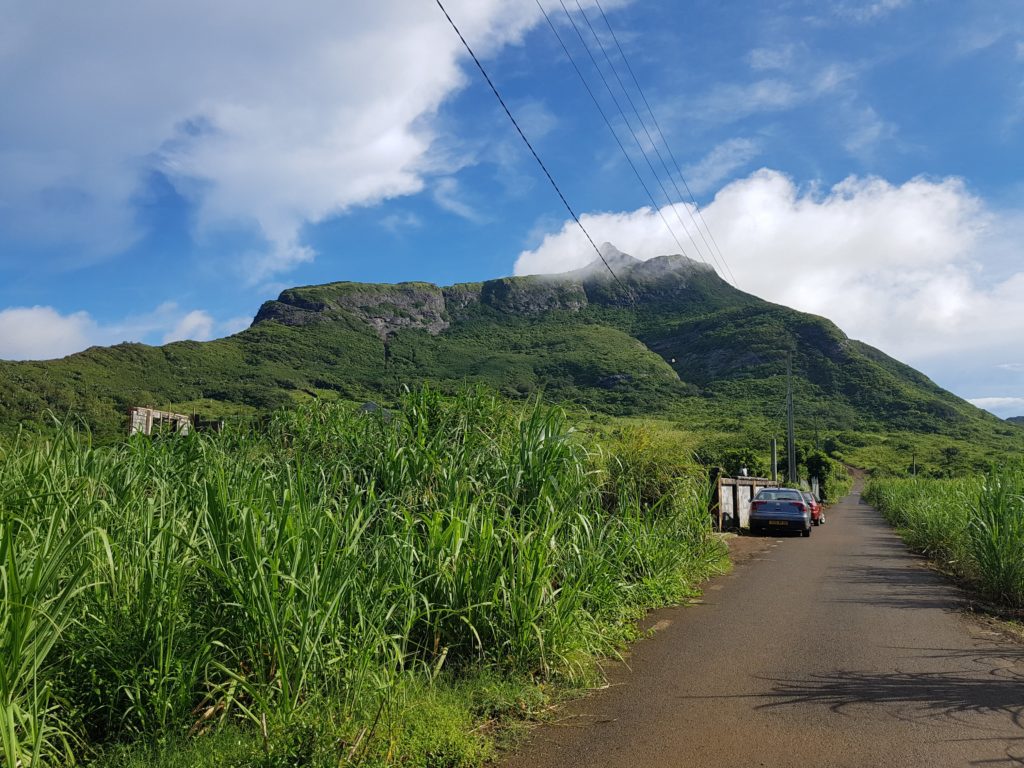

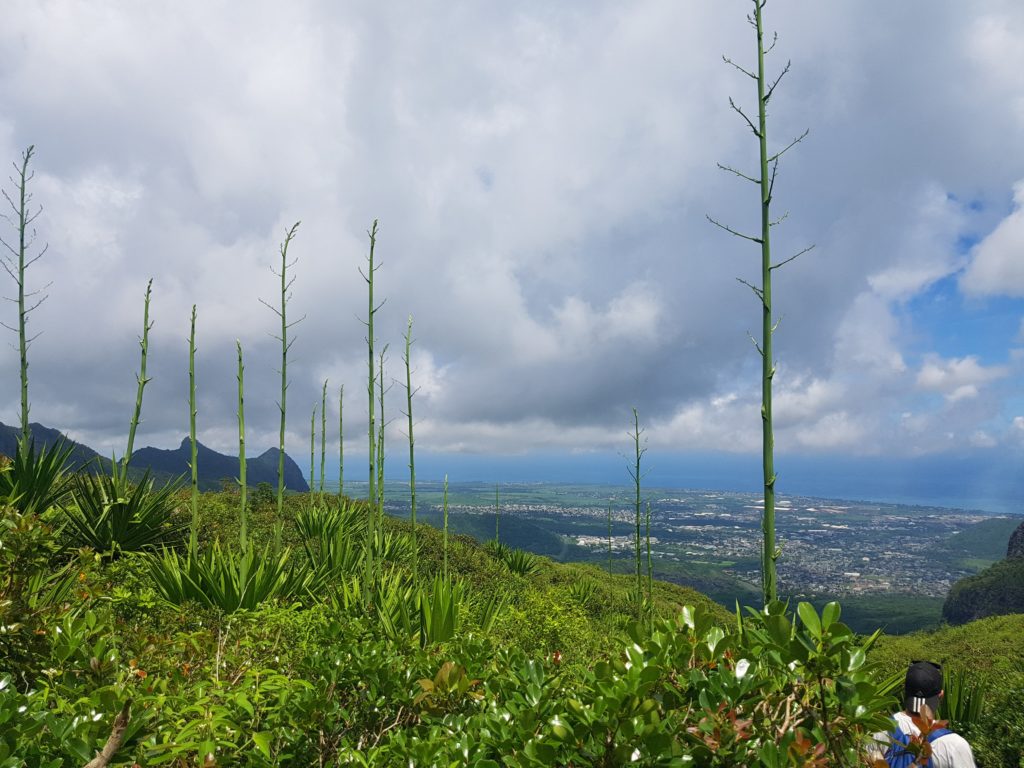
Le Morne Brabant (556 m above sea level)
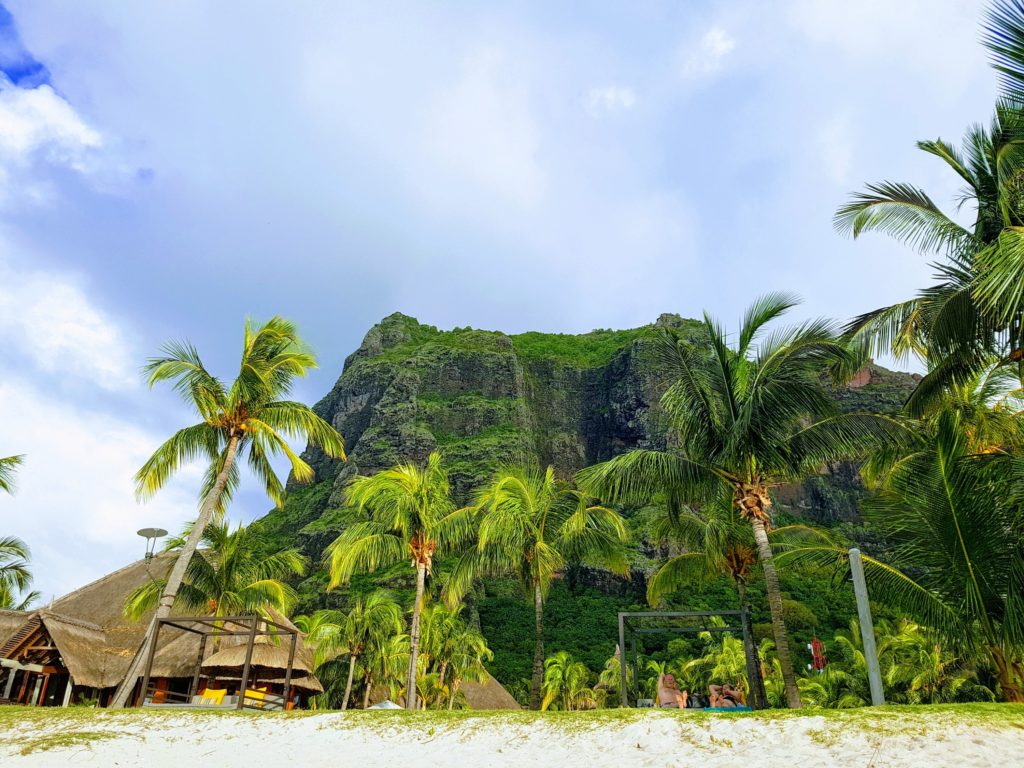
This mountain was added to the UNESCO World Heritage List in 2008. The ascent to the first part of the mountain is easier than the previous mountain, possibly due to the improved roads and lower altitude. The path is wide and easily walkable. Even off-road vehicles can use it. It is the only mountain with an opening time from 7:00 am to 4:00 pm. If you take the bus, you will get off on the south side of the mountain in a curve (wave to the driver) and walk about 1.5 km on the flat road to the beginning of the trail to the top.
If you drive, you will reach the parking lot on the south side by the same road. The road is dusty but well-passable. It is good to sign in the visitors’ book at the gate and continue following the signs to the top. There are two peaks. The first one (approximately 240 m above sea level) can be reached on good terrain, providing you with beautiful scenery of the southern and western coast. If you feel up to a much more demanding ascent, you can continue on the path, which quickly turns into an unpaved mountain trail. It leads to the second peak at about 500 m above sea level. Few tourists make it all the way to the top; most stop halfway, and some don’t even know they can continue. The view from the very top is stunning.
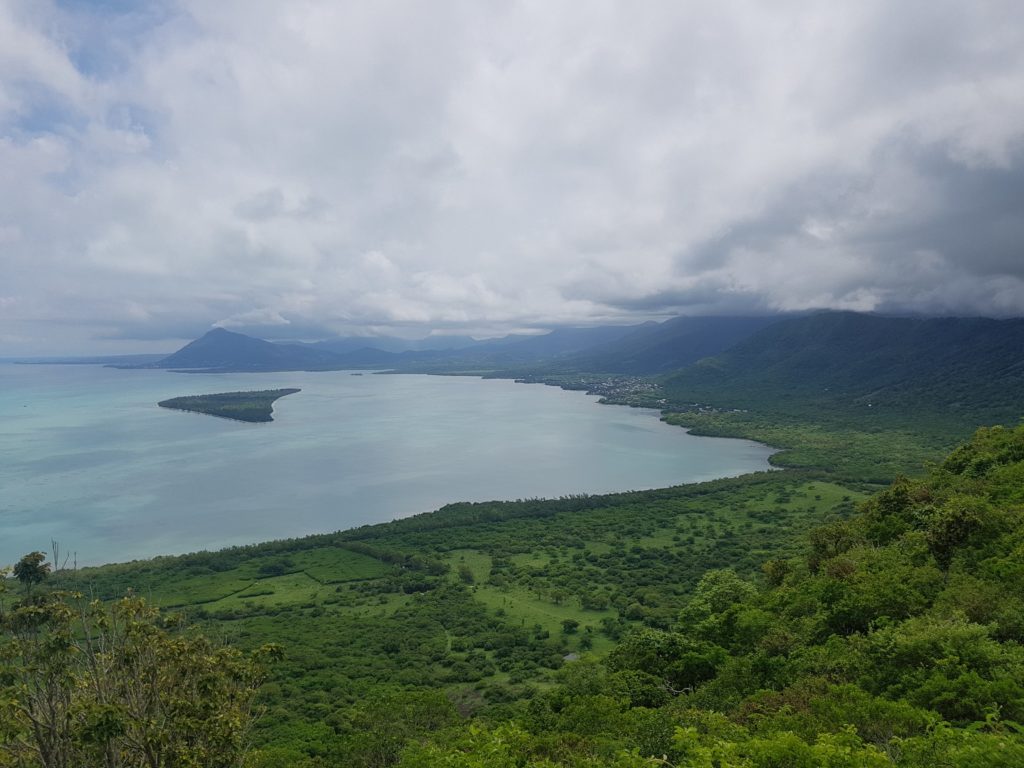
Beaches
The island is surrounded by a coral reef, so there are no waves on the coast, and the sea is warm and shallow, ideal for snorkeling and observing colorful fish, sea urchins, and other marine creatures. All beaches on the island are accessible to the public, even those in front of luxury hotels. However, it can be difficult to access the beach between hotel complexes in some places (such as Le Morne), where one hotel is next to another, and the beach is enclosed by walls from the road. It is, therefore necessary to enter the beach through a public entrance and walk along the beach to reach your desired location.
You will be amazed by the colorful coral life in the sea, but you need to be careful of the poisonous marine creatures that live on the coral. It is advisable to wear water shoes and snorkeling equipment. You may encounter venomous snakes, but they are mostly timid. The danger here is the so-called Stonefish, a fish that stays at the bottom of the sea on rocks or coral, as it closely resembles stones or coral and is difficult to spot. It has spines with aggressive venom on its dorsal side, which you can easily step on. Besides severe pain, you may become paralyzed or even die. In such a case, you should call for emergency assistance and administer antivenom, and it is also good to immerse the injured area in hot water. You can avoid this incident by moving your feet along the sea floor and not stepping on top of it. If you kick the fish from the side, nothing will happen to you.
Pointe D’ Esny
A public beach that is quieter and poorer in coral reefs. There is not enough shade here. There are two entrances from the road to get to the beach, which are well marked, even with signs.
Blue Bay
A famous beach. It is overcrowded with locals during weekends and holidays. The largest and most beautiful coral reefs on the island are located in the area of the protected marine park (Blue Bay Marine park). This area is located a bit away from the coast, so tourists are transported there by a glass-bottom boat. The price for this approximately one-hour trip varies. It ranges from 250 to 800 rupees, depending on how much you want to bargain. More skilled swimmers can even swim there, but it is necessary to be careful of stronger currents between the islets. There are also several food stalls by the road where you can buy ice cream, coconuts, but also noodles and hamburgers. If you continue walking along the beach towards the north, you will reach much quieter beaches where you can snorkel near the shore.”

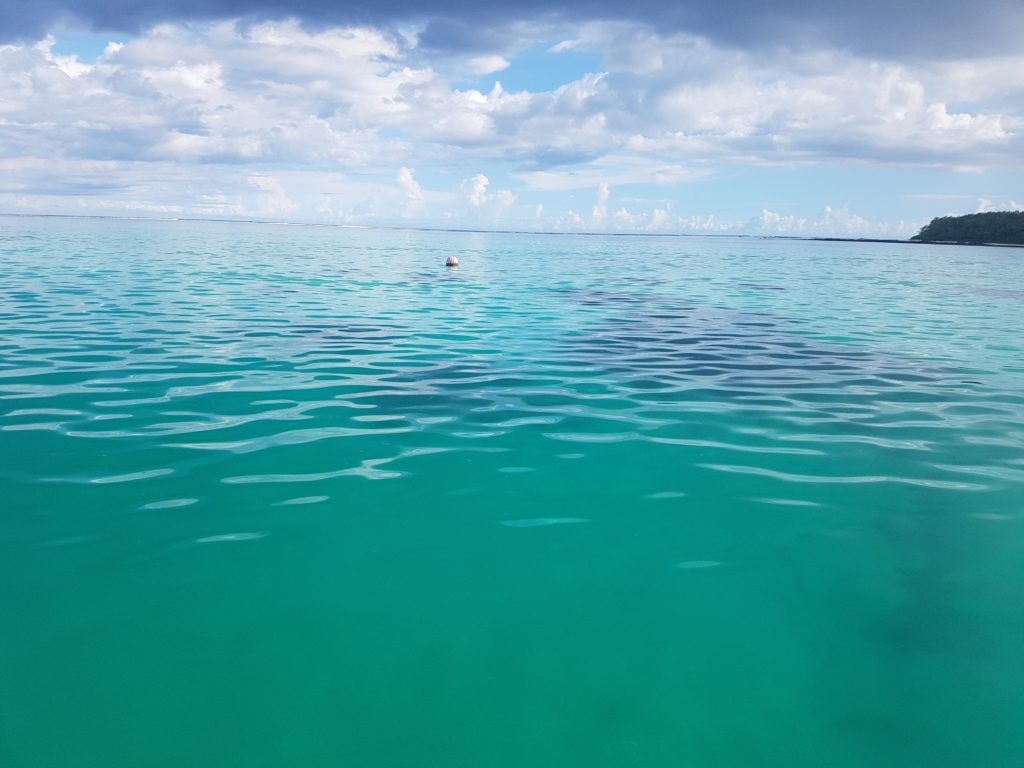
La Cambuse
A popular public beach, especially among locals. There are plenty of trees, so it is possible to find enough shade. On weekends, local families gather here and have picnics. The beach has no refreshments, only coconuts.
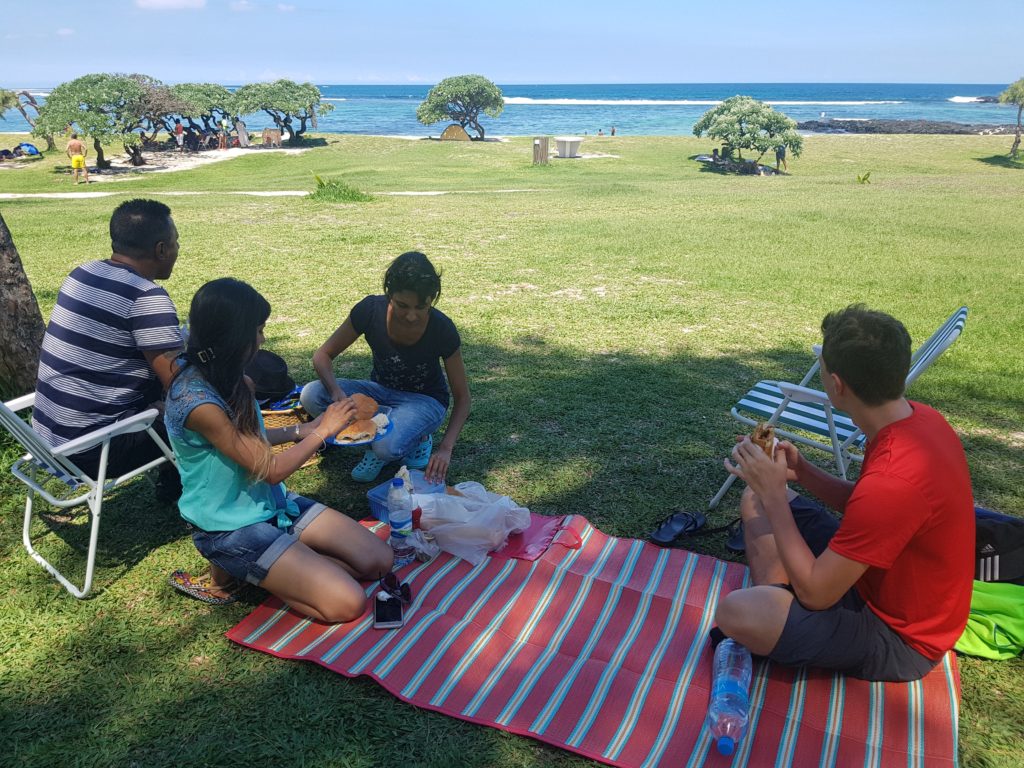
Gris Gris
This place is more of a lookout point than a swimming beach. There are no coral reefs here, so the waves are big and there are underwater currents. However, it’s still possible to swim with a bit of caution. Walking along the coast offers a view of the ocean and big waves crashing against the cliffs.
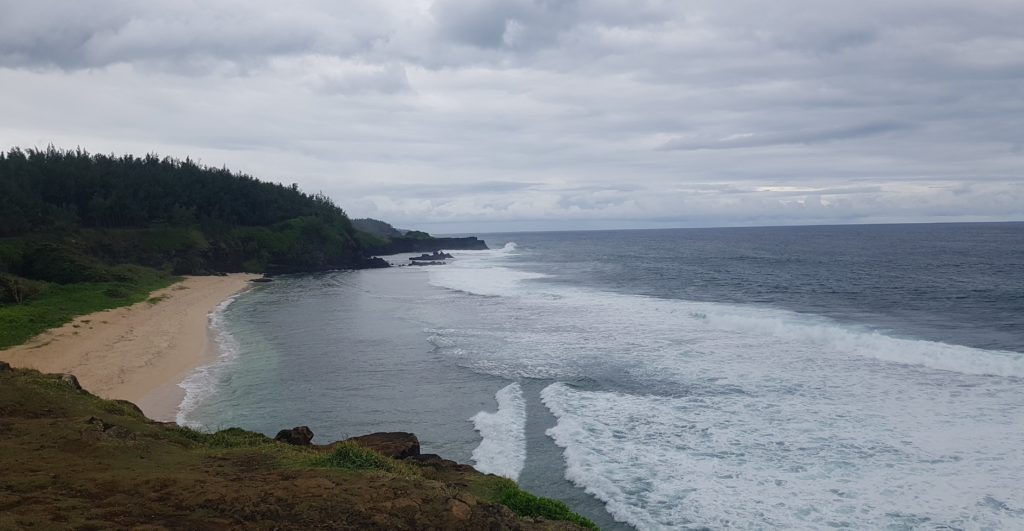
Saint Felix beach
A small and very quiet beach that’s not very well known or frequented by tourists. It’s quite possible that you’ll have the beach to yourself. The sea is clean. What’s fun about this beach is that when you enter the water further north, the currents will take you south. They’re quite strong, but not dangerous.
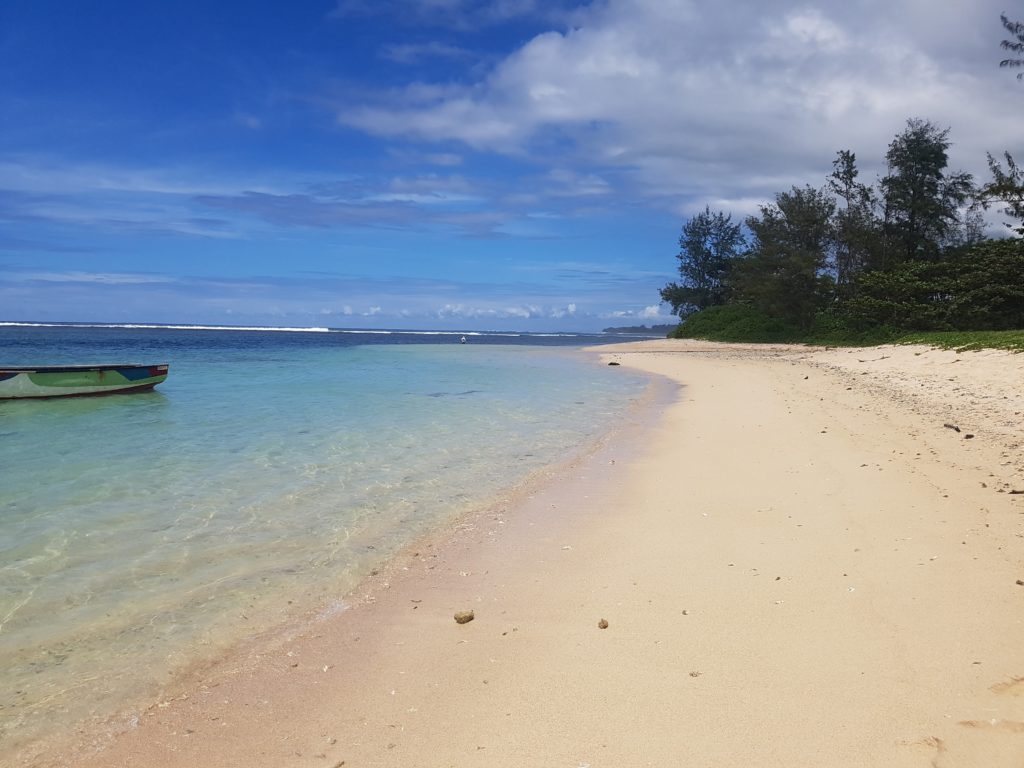
Le Morne
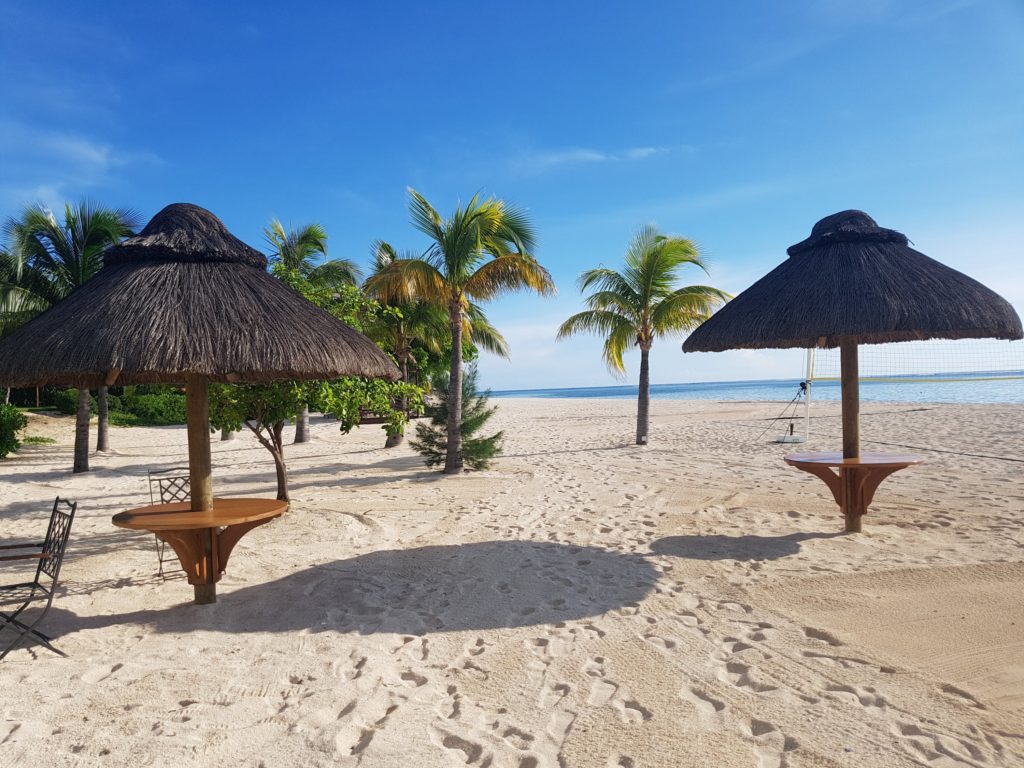
This is the most beautiful and luxurious part of the island, a peninsula surrounded by sandy beaches and luxury hotels. The best place for snorkeling is the beaches in front of the hotels. There are easily accessible extensive coral reefs full of colorful fish, but the beaches themselves are more difficult to access. You need to walk from the public beach along the beach to the south. The whole area is difficult to reach by bus, as it only stops on the main B9 road. It’s ideal to hitchhike a car or even a contract bus going to the hotel. There’s one rather expensive restaurant at the first intersection, then there aren’t many options to buy food and drink (bring your own). At the parking lot, there’s a fruit and water stall, and there’s only one restaurant on the beach, right at the hotel.
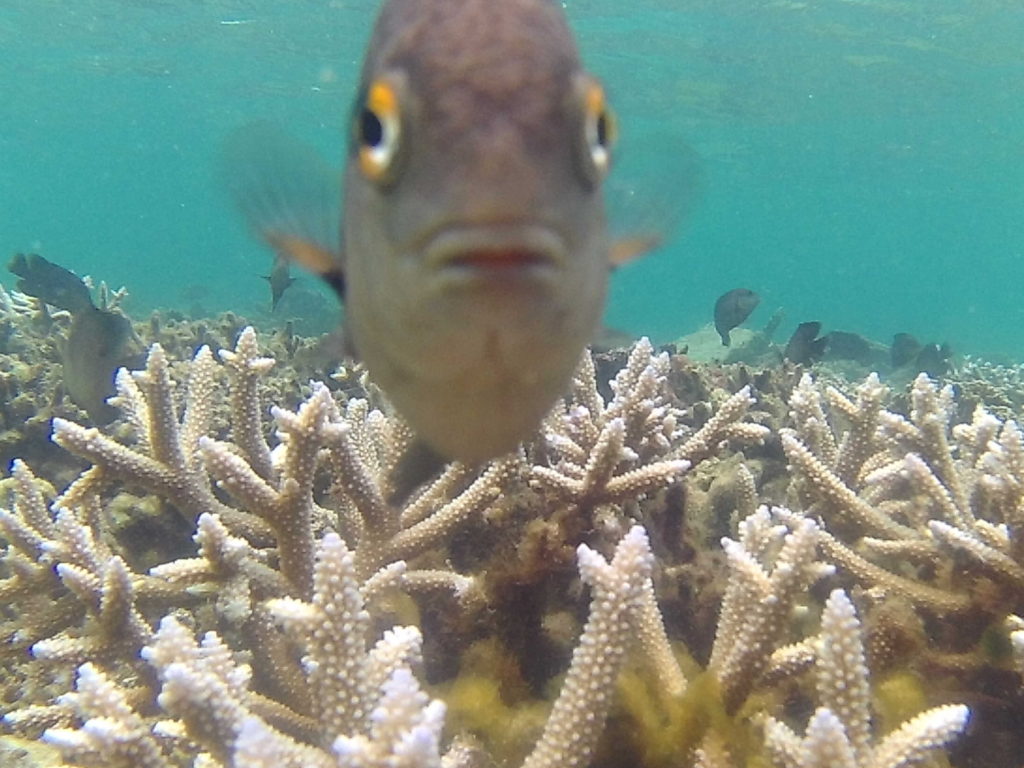
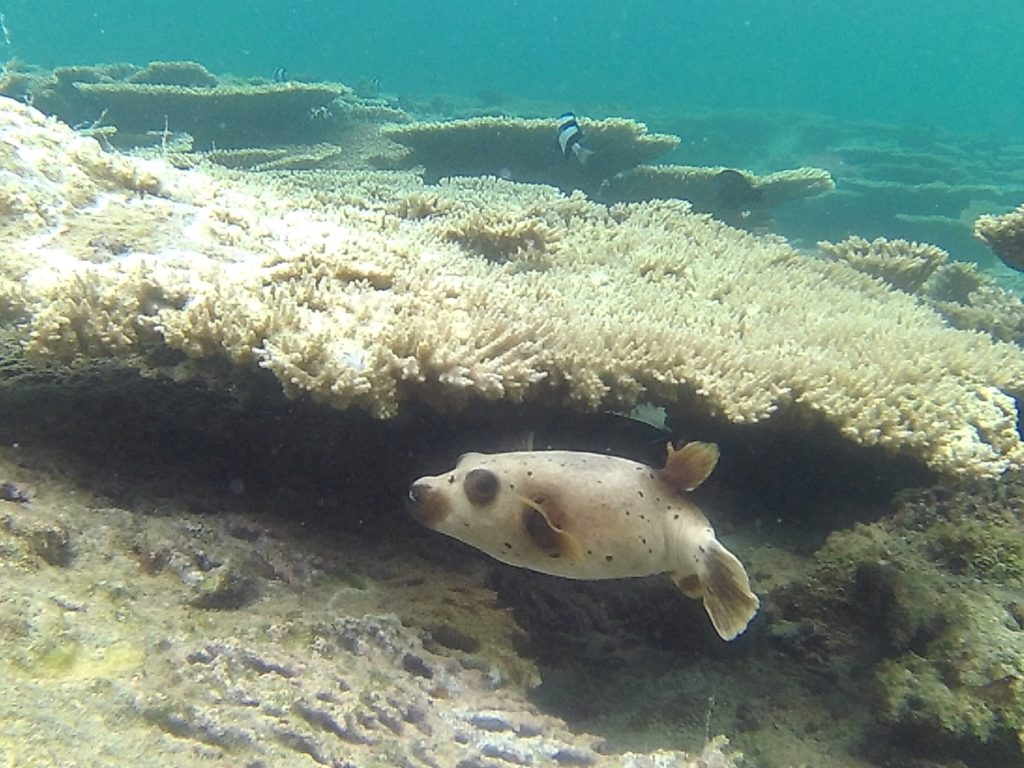
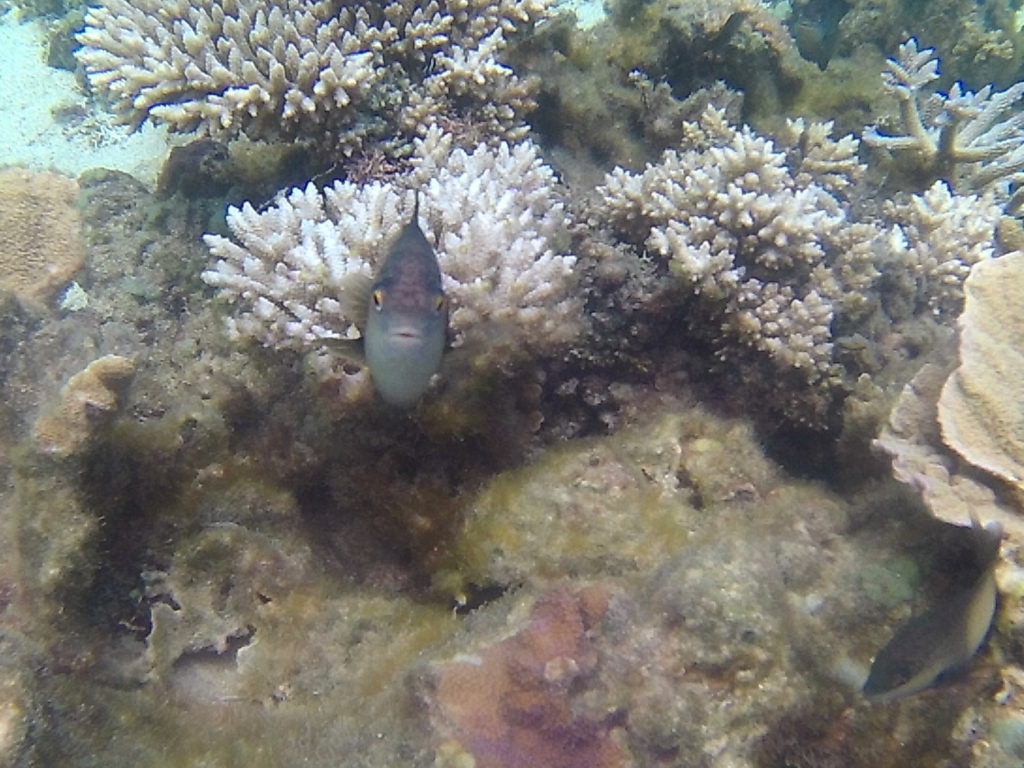
La Preneuse
The beach is not very nice or big, but there’s a nice view of the Le Morne reef. Nearby, you’ll find Tamarin beach, which is also not very nice, and because it’s in a bay, the water is cloudy. But boat trips to swim with dolphins are organized here.
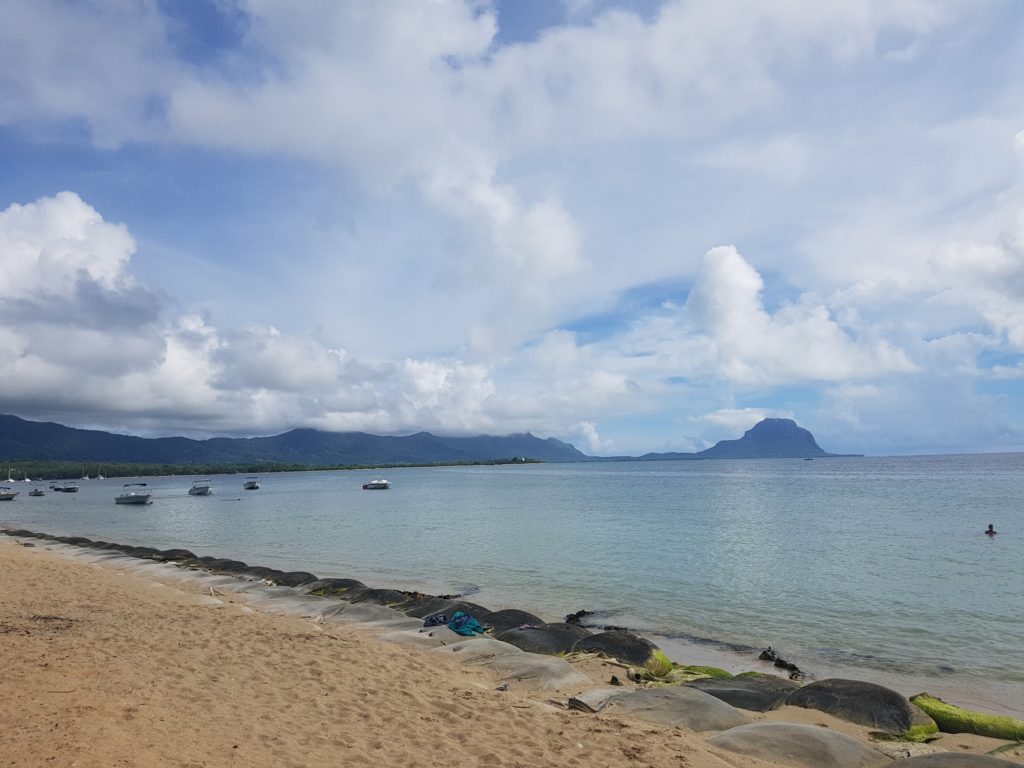
Flic en Flac
This city with a long beach is considered a tourist base. The beach is nice, but not as stunning as Le Morne. However, you can find accommodations at reasonable prices here, unlike Le Morne, and there are various dining options. The area is easily accessible by bus. You can expect clean sea, but with dead corals, and plenty of shade under the trees.
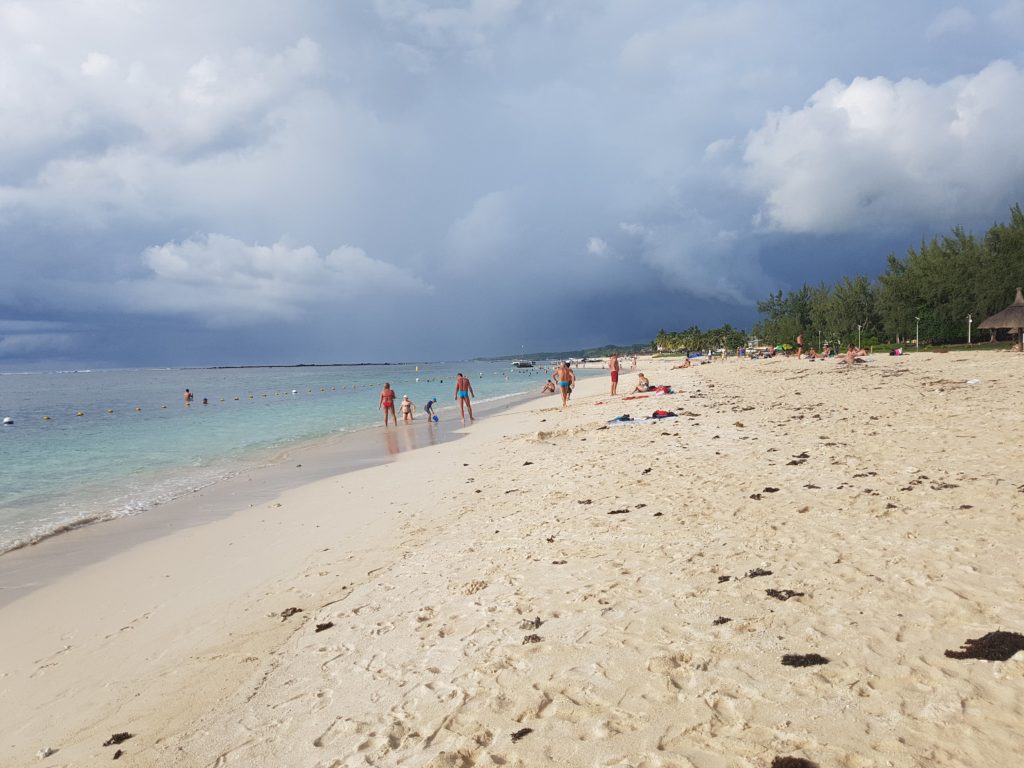
Albion
Dirty beach, murky sea. A popular destination mainly for locals who organize large gatherings and picnics here.
Balaclava
Relatively nice beach, but hard to reach. The area is full of hotels. You can get to the beach through a gate a few dozen meters from the last parking lot back.
Trou aux Biches
A beautiful beach. Although it is not suitable for snorkeling as there is only sand on the bottom, the sea has a beautiful light blue color and the sand is fine and white. The coast is lined with palm trees in front of hotels. There are several stalls in the public area, and wandering coconut, pineapple, and other fruit vendors, as well as jewelry, scarf, and other vendors.
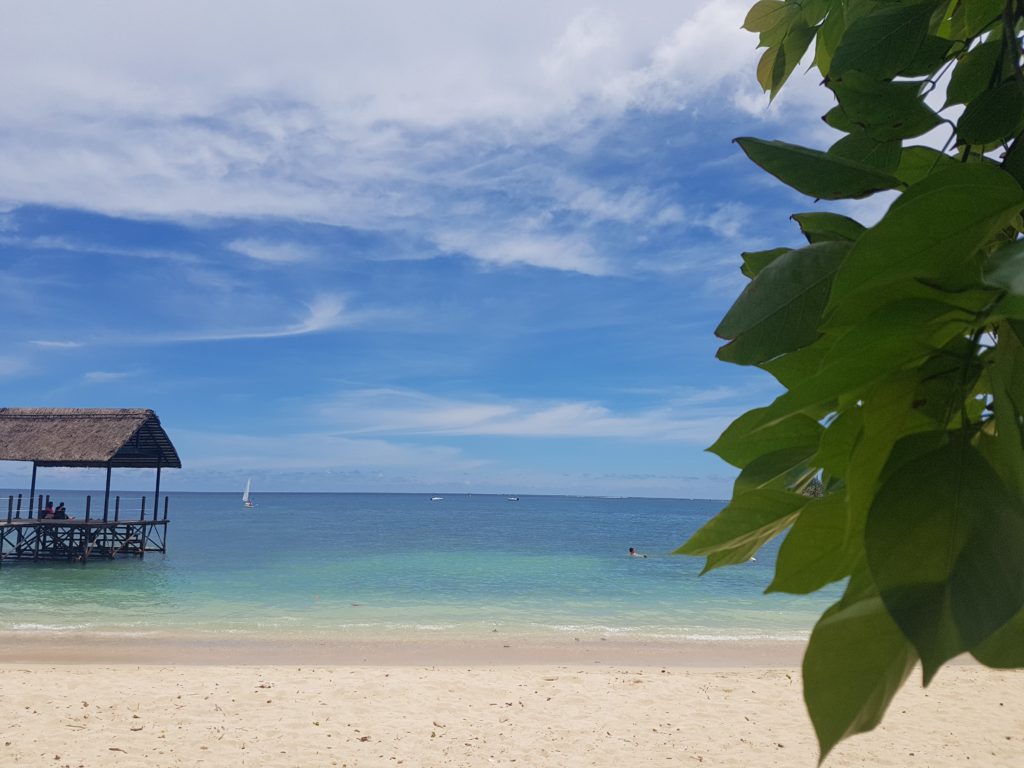
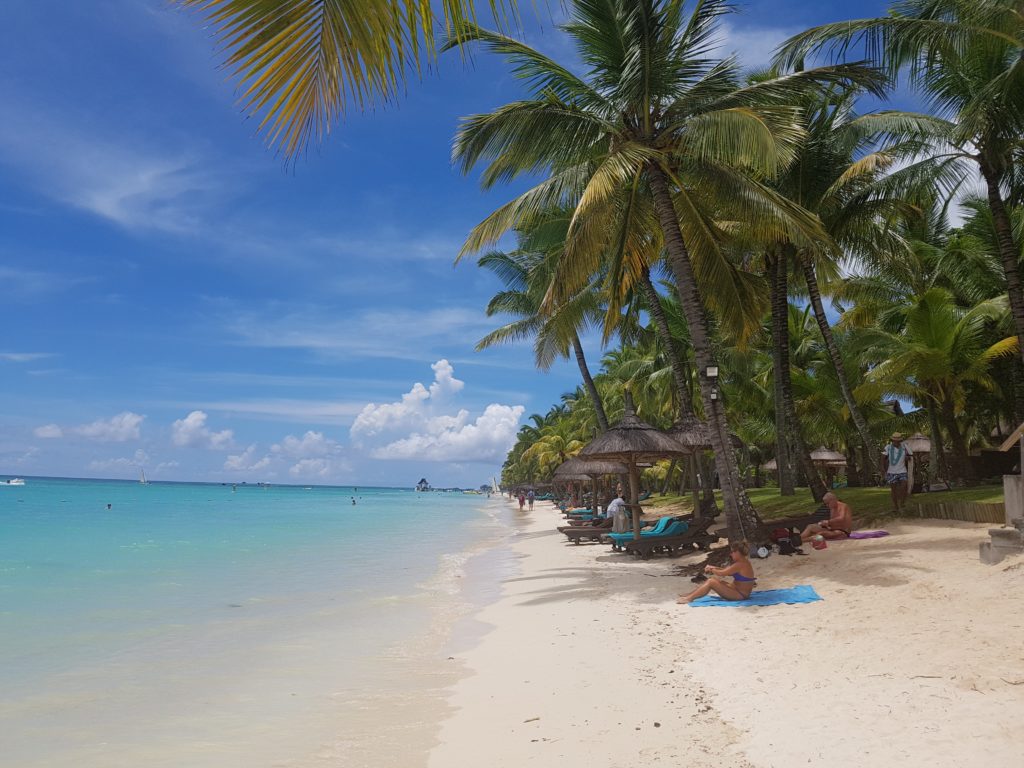
Mont Choisy
This beach is located in the north of the island and is one of the longest beaches in Mauritius. The sand is white and the sea is crystal clear. There are several restaurants and bars nearby, making it a popular spot for tourists. However, it can get quite crowded during peak season.
Pereybere
A nice and clean beach, although it is in a bay. It is not very large but popular among locals and tourists. Refreshments are available at the public entrance to the beach.
Poste Lafayette
A clean small beach between cliffs. Great for diving due to the coral reefs. A quieter place without hotels.
Belle Mare
A busier area also popular among locals. It has a relatively long beach with plenty of shade under the trees. The sea is not suitable for snorkeling due to the sand.
Note! If possible, wear a shirt instead of using sunscreen for snorkeling. Sunscreen easily gets into the water and its substances stop coral growth, gradually destroying them. The high level of tourism in these areas is a serious threat to the future of coral reefs.
Cities
Cities in Mauritius may not be the main attraction, but if you have some time, it is not a bad idea to visit some of them.
Mahebourg
Mahebourg is a traditional local town. Don’t expect crowds of tourists or luxurious hotels or restaurants. The town still maintains its old, traditional, and dirty impression, and you can find a bit of authenticity here. Thanks to this, the prices are lower, so shopping here is a pleasant experience. There is a large market in the center that comes alive mainly on Mondays. It is usually open from morning until around 5 pm and is the ideal place for cheap purchases of fruit, vegetables, spices, dried fish, and more. If you want to save money, go shopping in the afternoon, preferably when local vendors are slowly harvesting. Apparently, no one wants to bring anything back home, so they sell everything at any price. The whole process is accelerated and slightly dramatized by the incoming rain, as the market has a roof only made of canopies. So it can easily happen that a person brings home bags of tropical fruit at ridiculous prices. At the same time, it is possible to have a cheap meal with locals, buy some clothes or souvenirs, and there are even several ATMs. On the coast, there is a monument to the victims of the island’s conquest with a beautiful view of the ocean and part of the island.
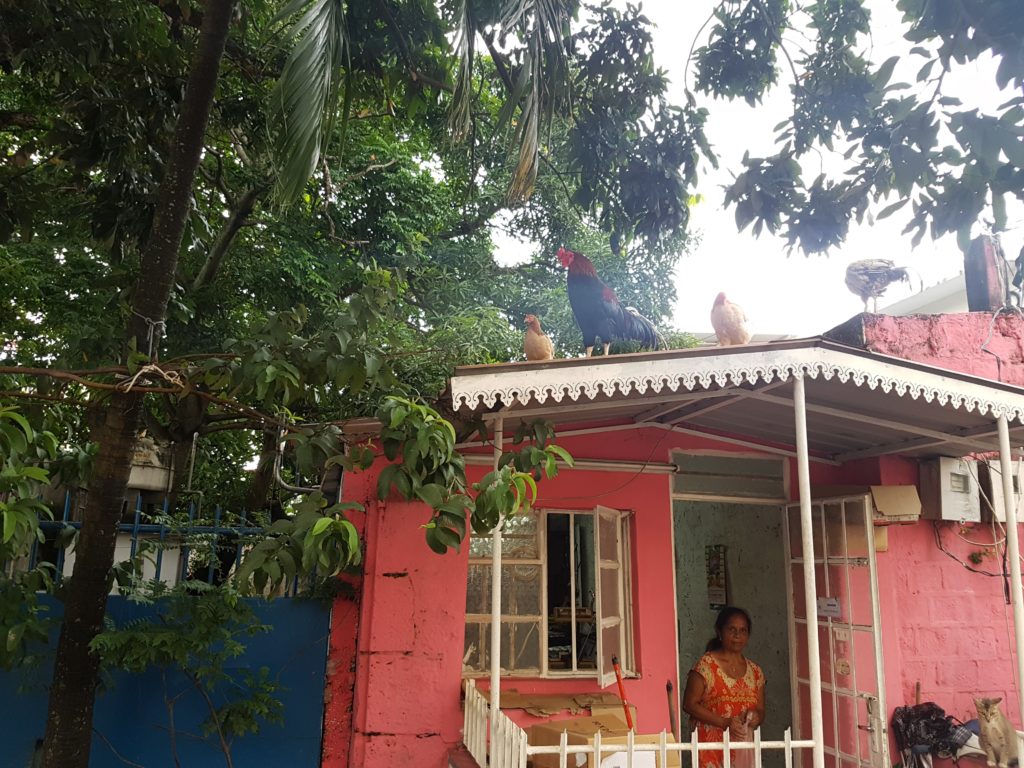
Port Louis
Port Louis is the capital of Mauritius. The city is quite wild again with a traditional feel, full of markets and all sorts of stalls with clothing and everything possible. You can also buy a lot of branded clothing here at lower prices. An interesting landmark of the city is Adelaide Fort. It is an old fortress that served to defend the island located on a hill in the middle of the city. Admission is free, and there is a beautiful view of the whole city, the ocean, and the high mountains behind the city. Furthermore, there is a harbor and several architecturally interesting buildings in the city. The Blue Penny Museum is also a well-known attraction, where the world’s most famous stamps are located – the red and blue Mauritius. Choose to visit the city in the morning or late afternoon. The sun is hot, and it’s really warm here during the day.
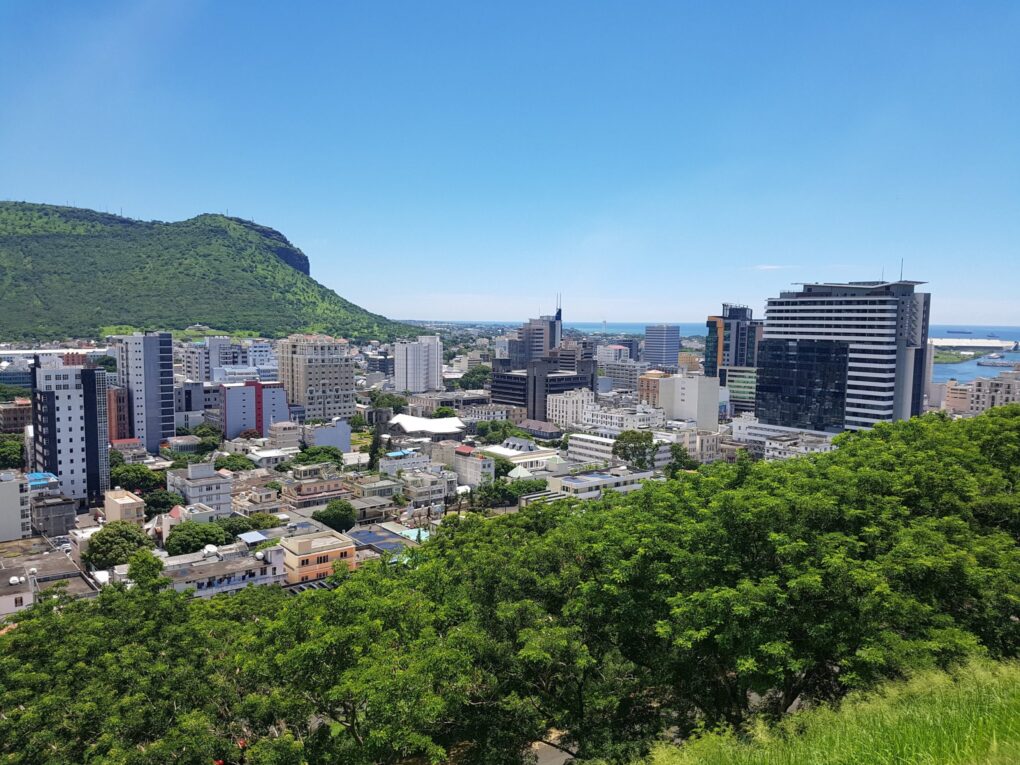
Curepipe
The highest city on the island with the coolest climate (although it is not cold), which developed due to the malaria epidemic (1867), as people moved here from the capital for cleaner air. The main attraction is the volcanic crater Trou aux Cerfs, which allegedly gave rise to the entire island. You can drive up there, and there is an asphalt road around the crater, so you can walk around it entirely. From the crater, there is a view of the entire city and other nearby towns. Admission is free. There is also a botanical garden here.
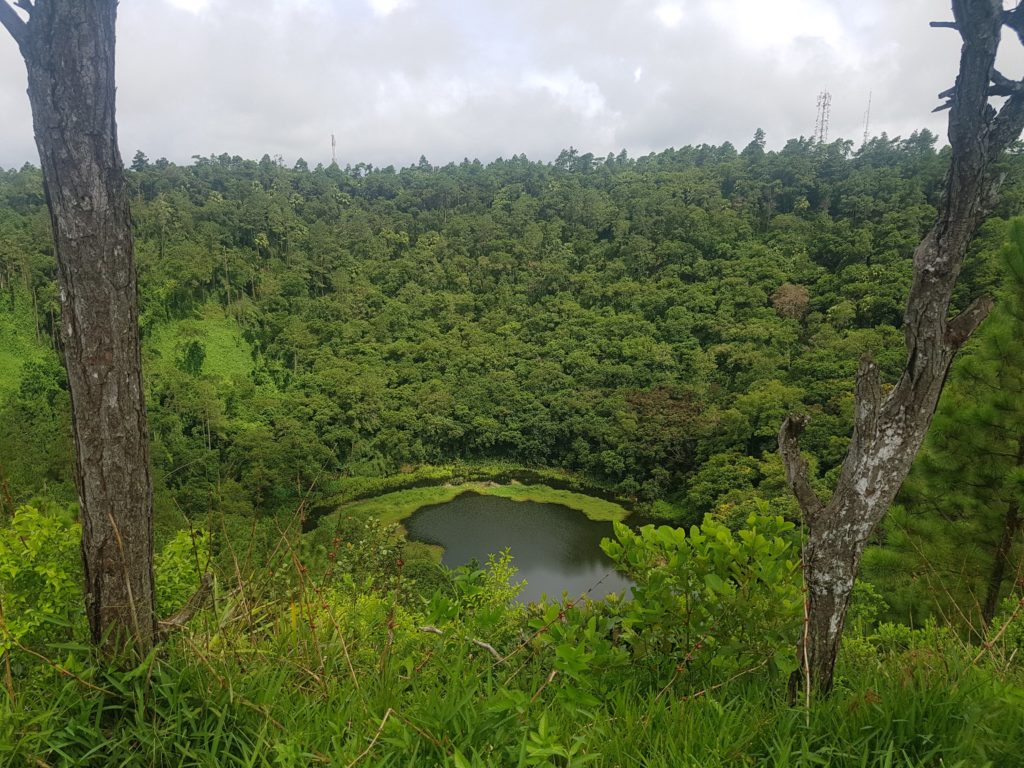
Quatre Bornes
The next town in the hills is Quatre Bornes. It is not very touristy and at the same time expensive. For locals, it is one of the most expensive parts of the island. Wealthy locals therefore do not live on the coast but inland, in the hills. There is a large market in the center where something different is sold every day (once clothing, another time fruits and vegetables), but prices are not as favorable as in other parts of the island. There is also a central bus station from which you can go almost anywhere on the island. The streets here are a chaotic maze, and traffic is heavy. If you do not live here or are not transferring, there is not much reason to come here.
Grand Baie
Grand Baie is a place of tourist activity. It has a vibrant nightlife with plenty of bars and restaurants. During the day, you can take advantage of the local beaches for swimming.
Waterfalls
Rochester falls
The Rochester Waterfalls are easily accessible on foot, but can also be reached by car, although not very comfortably.
There are two access roads. You can take a bus to the Souillac bus station and then follow the path to the north on the right bank of the river, passing through the town, newer developments, and cornfields. You can also drive along this road. You can park your car among the banana trees after about 2.5 km and then walk the remaining 50 m.
The second access road is a proper road, and you can park your car at its end, where you will find yourself above the waterfall. However, there is a path that leads around the waterfall, and you can take it to get under it.
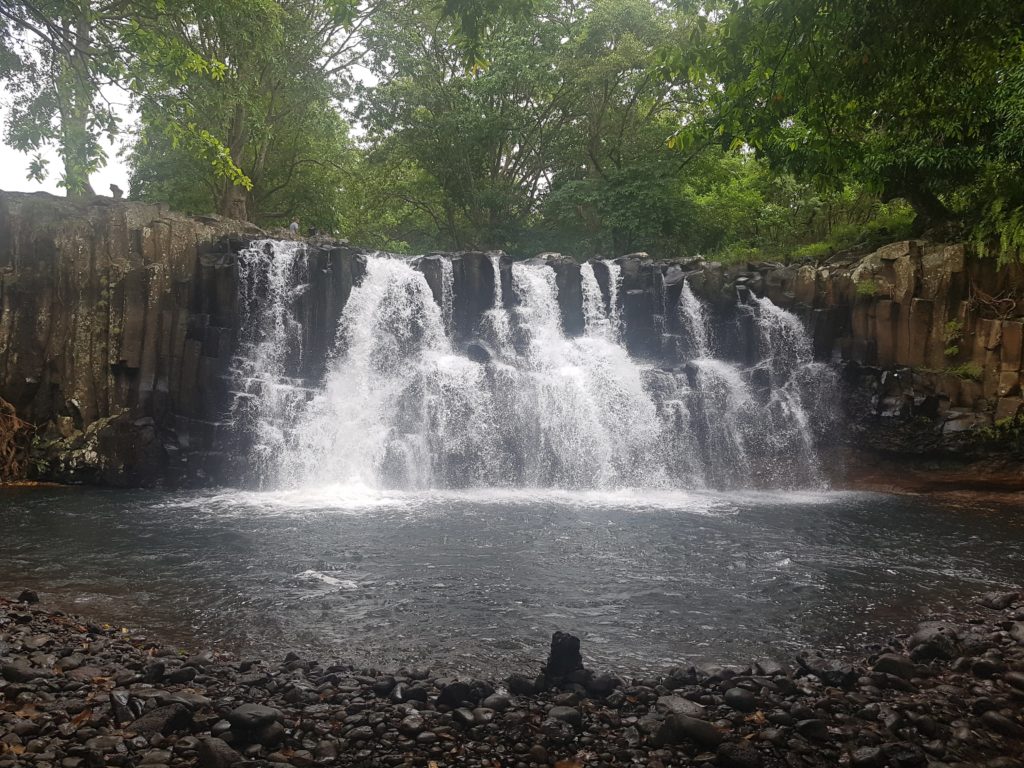
The waterfalls are quite low but wide in comparison to others. Although the water is not perfectly clear, it is possible to swim here.
You may encounter young boys who earn money by jumping off the waterfall. They will do stunts for you, but then ask for money in return for watching or taking pictures. They also sell coconuts.
When looking at the waterfall from the front, you will see a path on the right that leads up around the waterfall. This is the path that the boys use to get to the top of the waterfall to jump.
Chamarel waterfall
Beautiful and photogenic waterfalls that are associated with an attraction called Chamarel 7 Coloured Earth. Unfortunately, there is an entrance fee to the entire area. As foreigners, you can expect to pay around 250 rupees. The best way to get here is by car as buses do not come here and it is far to walk.
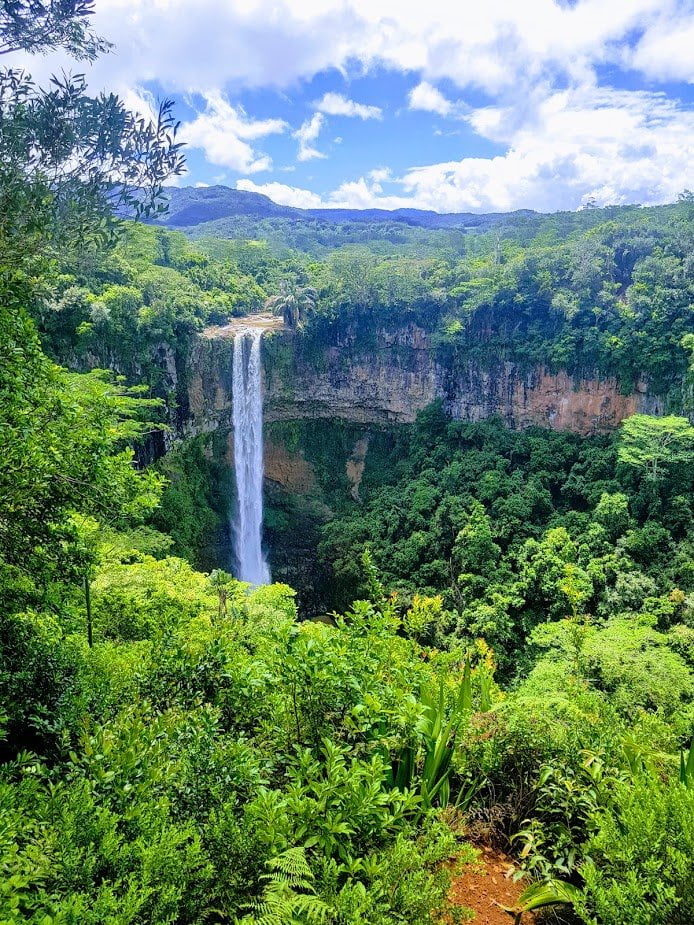
The waterfall is located on rocks in dense jungle, and you cannot get to it. You can only observe it from a distance from the viewpoints in the area. Even so, it is beautiful. The waterfall is 100m high, which is as high as the Statue of Liberty. The oldest part – the lower two-thirds of the waterfall – is about 10-8 million years old, while the upper third is only 3.5-1.7 million years old.
Tamarin waterfall
The waterfalls have the largest area and consist of several consecutive waterfalls. Since the waterfalls are not easily accessible, it is a natural experience without crowds of people. The journey begins at the bus station in Henrieta, which you can reach by bus from Quatre Bornes, for example. Local guides are waiting for you here, which you can hire for a considerable sum for a jungle trek, or you can choose an adventurous option and go to the waterfall alone.
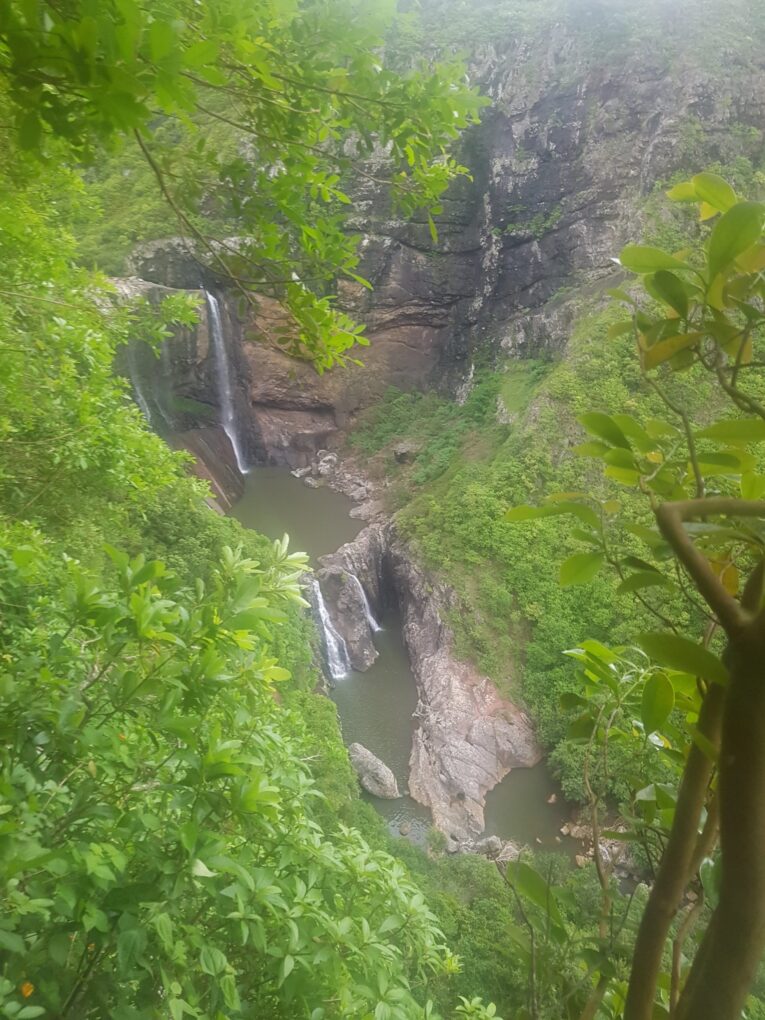
There are two main paths leading to the waterfalls. The first is demanding and long, and the second is easy and short. The first is challenging both physically and in terms of orientation. If you want to experience the local wild jungle for yourself, it’s the real deal. Essentially, you’ll be wading through the river, dense jungle, and waterfall cascade for several hours uphill. The complication is the partial absence of a path. If you go alone, you need navigation to help you slowly navigate the wrong terrain in the right direction. The path, which almost doesn’t exist in reality, is well marked on maps.cz. In some sections, the path is well worn, sometimes you can get lost on the way over rocks, across the river. Usually, however, it runs along the river, so if you still see it, it is likely that you are going the right way. You can get to the beginning of the trek by descending from Henrieta to the power plant by the river, then heading upstream. Along the way, you will pass many smaller and larger waterfalls. At about two-thirds, be careful of the junction of two rivers, you need to head up the left tributary. Then, you have a steep climb ahead of you to get above the highest waterfall of the Tamarin cascade. You will be fighting your way through the jungle along the way, but the result is worth it. Allow at least 4 hours for this route.
The second route to Tamarin waterfall is much easier and takes about an hour. Starting from the Henrietta bus stop, you walk along the road towards the Tamarin Falls Reservoir. Once you reach the reservoir, you’ll see a signpost for the waterfall. From there, it’s a short and easy walk to the waterfall. This route is suitable for those who don’t want to trek through the jungle or those with limited time.
Please note that while the second route is easier, you still need to be careful as the path can be slippery in some places, especially after rainfall. Also, it’s important to follow the signposts and not to venture off the path as the area is known to have some dangerous wildlife.
Overall, both routes offer unique experiences, and the choice between them will depend on your physical fitness level, time availability, and personal preferences.
Alexandra waterfall
This waterfall is not particularly special because it’s not very visible. It’s hidden in the forest next to the viewpoint. If you use the lookout tower, you can see a part of these waterfalls. The most beautiful thing about this place is the view of the island. It is one of the most beautiful on the island. In any case, it is also a very good place to rest or have a snack. A favorite spot among locals.
No waterfalls are paid (except for Chamarel), so no one should ask you for anything.
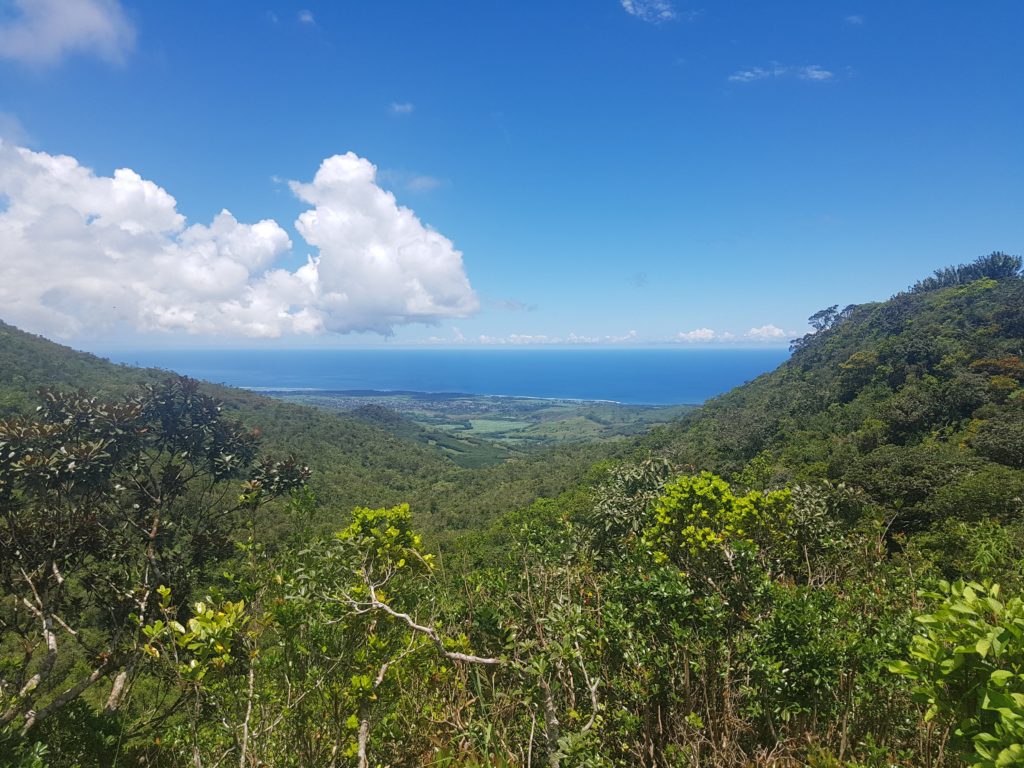
Other places to visit
- Chamarel 7 colored Earth – One of the main tourist attractions. It’s soil/earth colored in seven colors. You can only take pictures and observe it from behind a fence. There are also some land tortoises, a view of a waterfall, and a landscaped garden. As mentioned in the article about the waterfall, there is an entrance fee for the entire area. As a foreigner, you pay around 250 rupees. You can get here by car or taxi, buses do not go here.
- Botanical garden – A beautiful and quite large garden in the north of the island. You will find various species of tropical plants here, such as the largest water lily, Victoria amazonica, whose leaves can carry even a small child. Allegedly, it is the oldest botanical garden in the southern hemisphere. There is an entrance fee.
- Cap Malheureux – The northernmost point of the island with a beautiful view of the sea and a photogenic church.
- Grand baobab – If you’re already bored around the airport and have never seen a baobab before, you can go to this place. The path leads through fields. The baobab is probably the only one on the island.
- Grand Bassin Lake – This lake has mainly religious significance, as the water in it is sacred. Around the lake, you will find Hindu statues, temples, offerings, and many people who come here to worship the gods. On the hill above the lake, there is a view of the lake and its surroundings. You will find huge statues in the parking lot. Admission is free.
- Tea Plantations – Quiet tea plantations right by the road. You can also visit a tea factory here or buy local tea directly from the factory.
- Albion Lighthouse – A beautiful place on the coast. You can walk along the cliffs here and maybe watch the sunset.
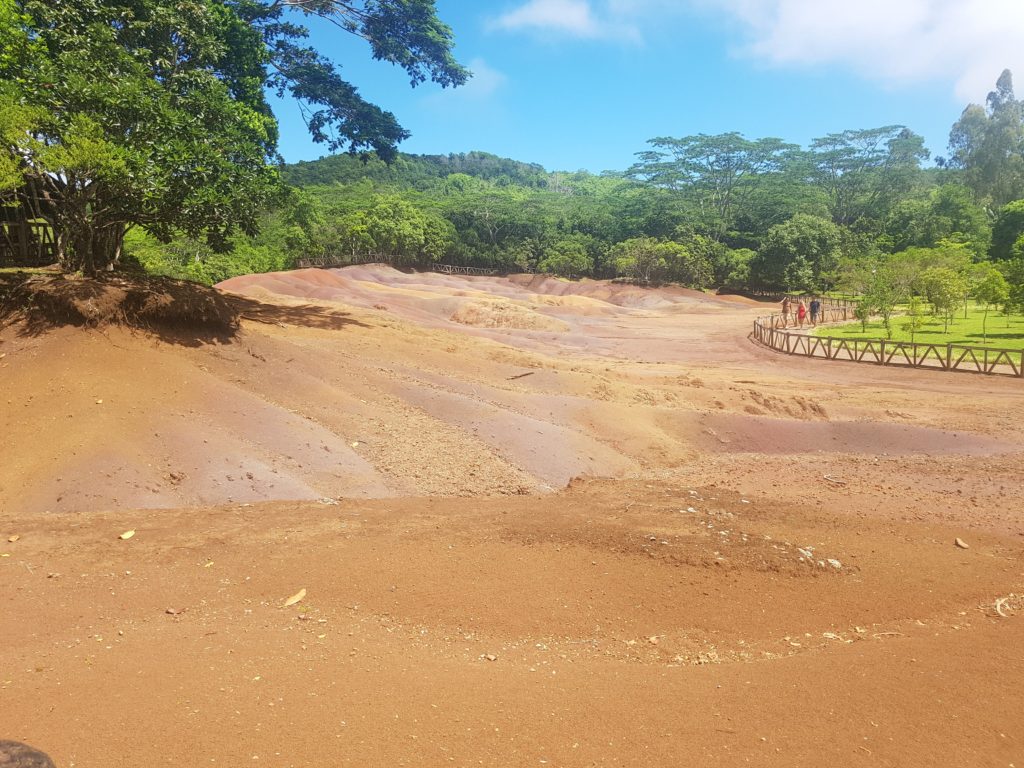
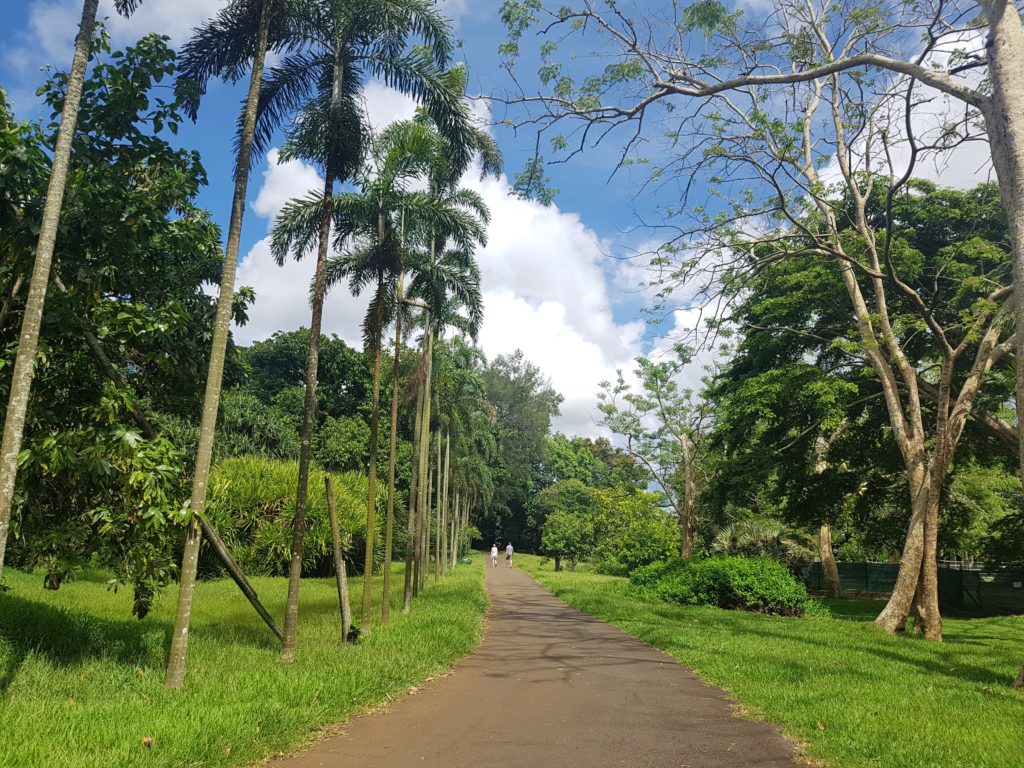
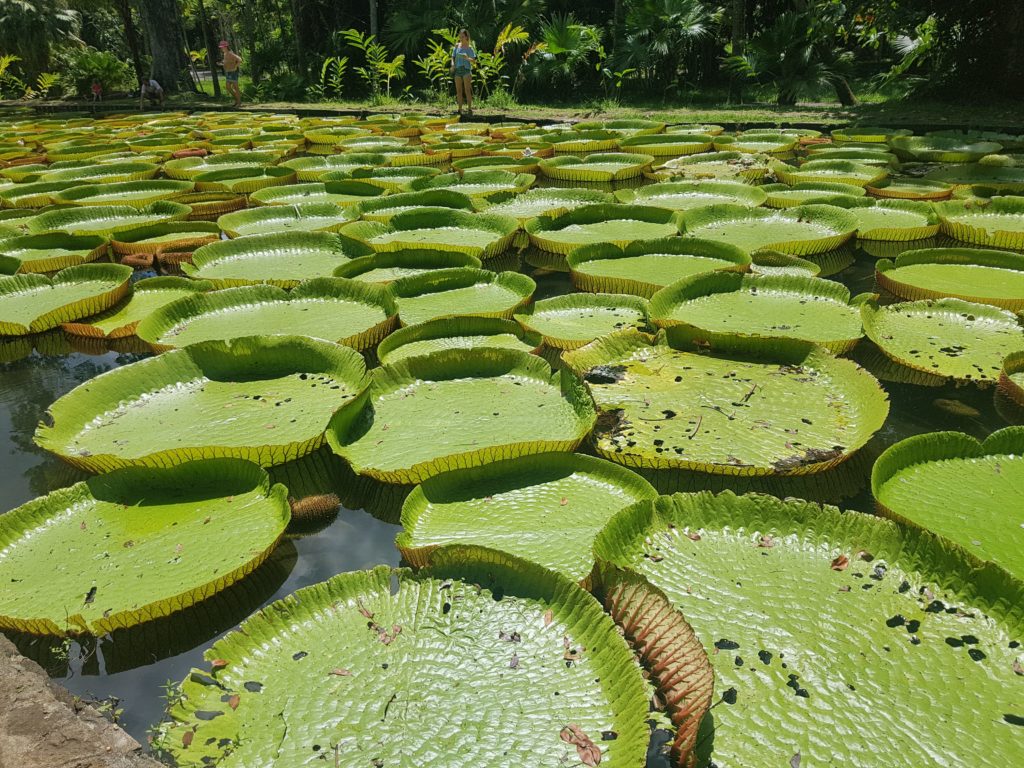
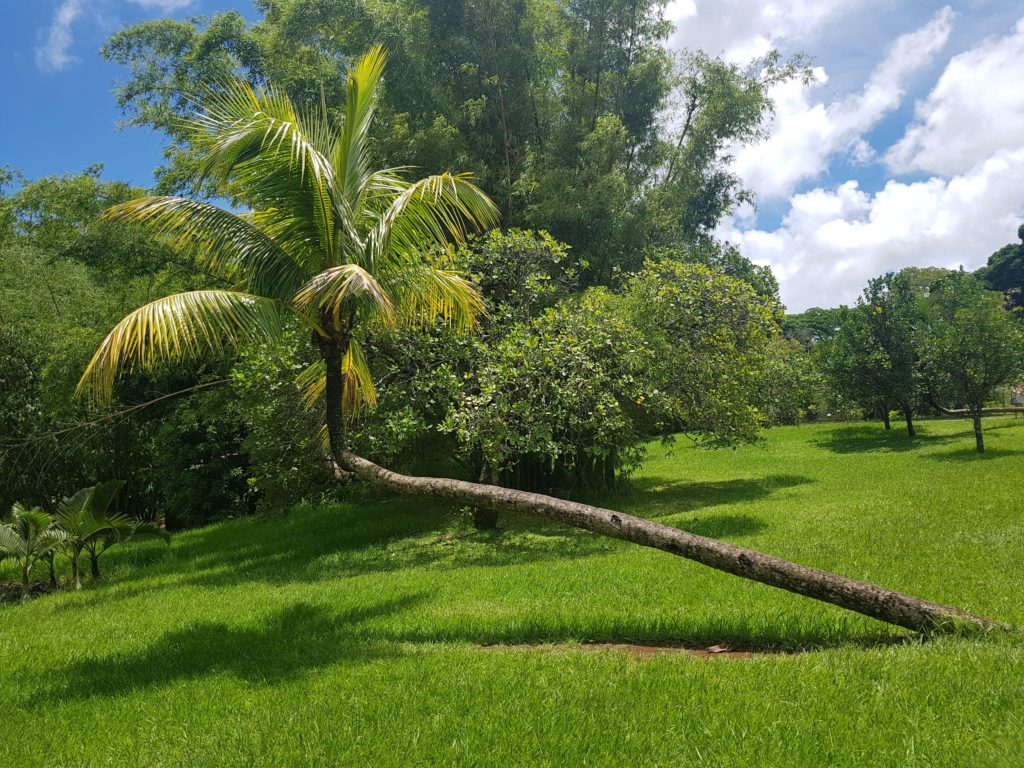
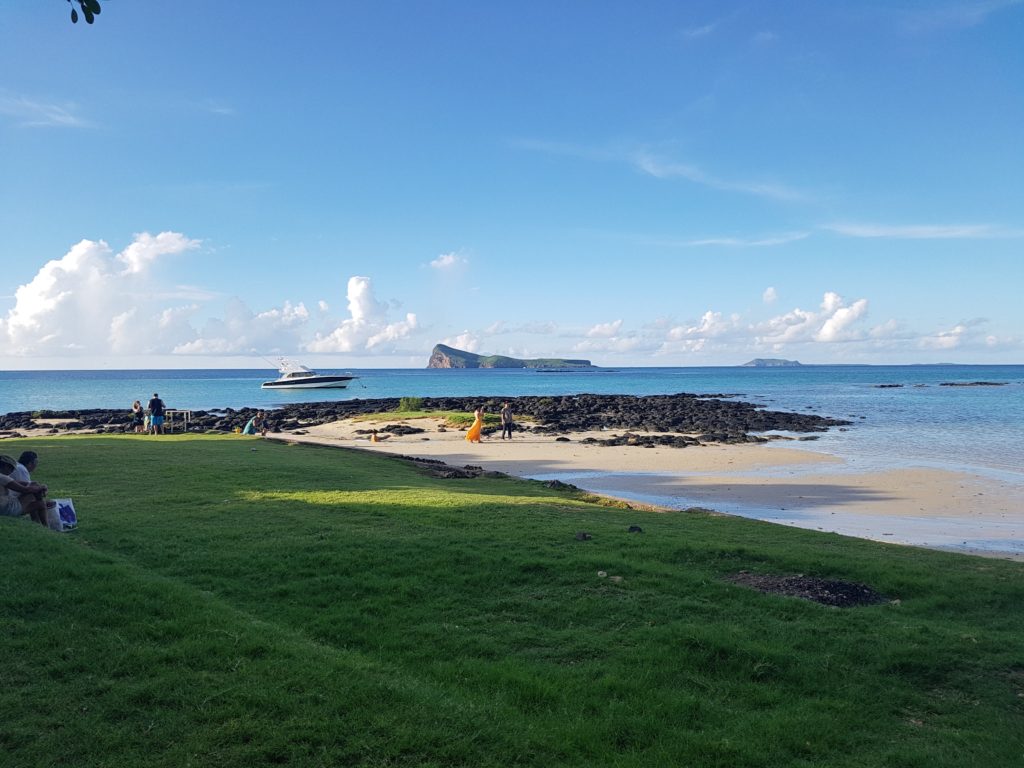
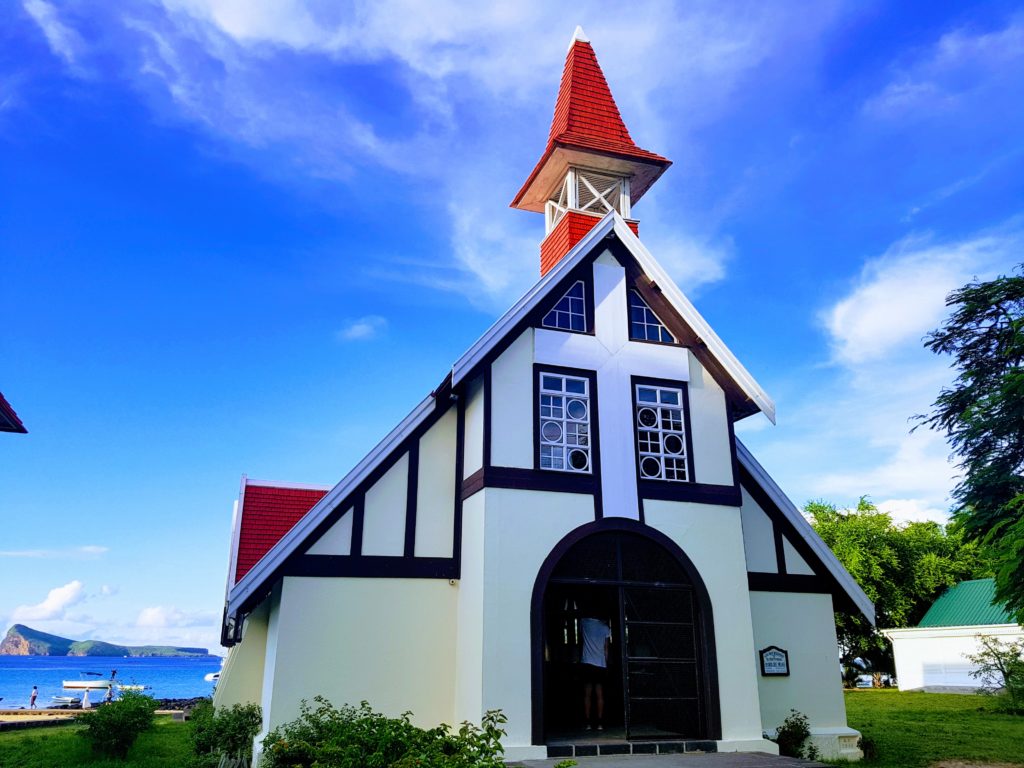
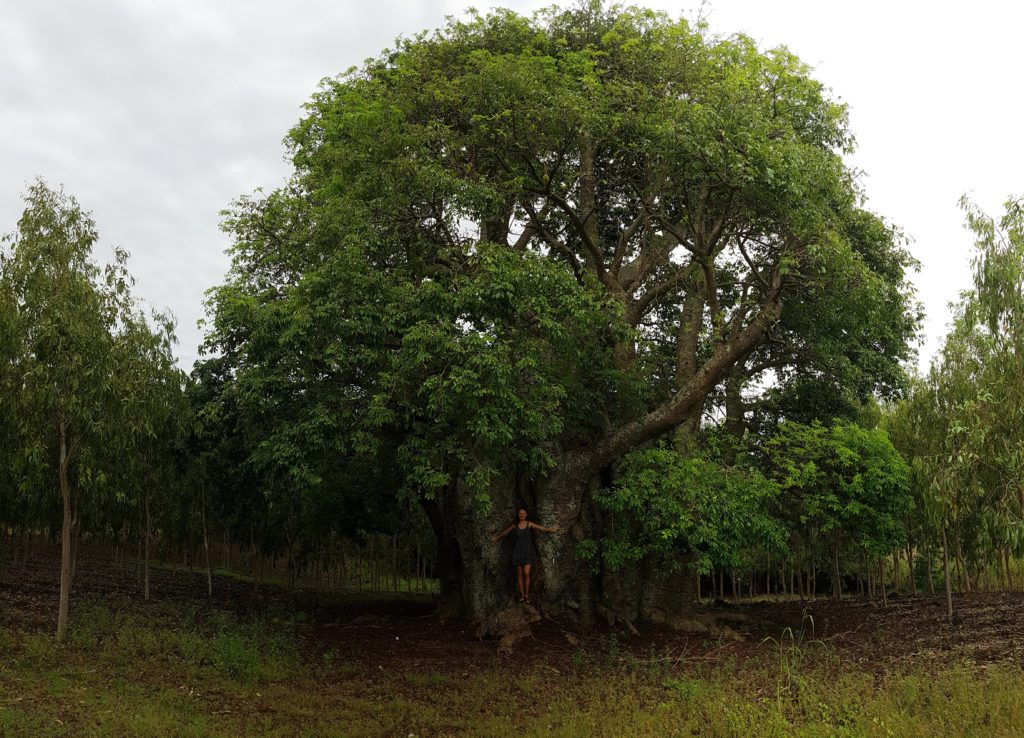
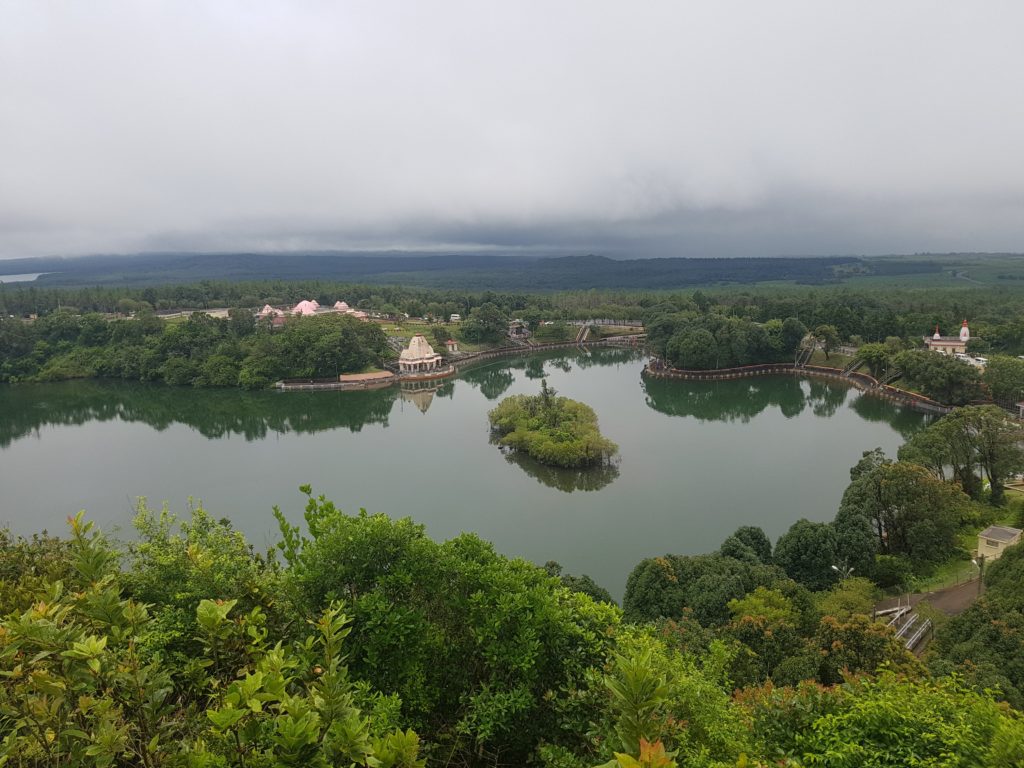

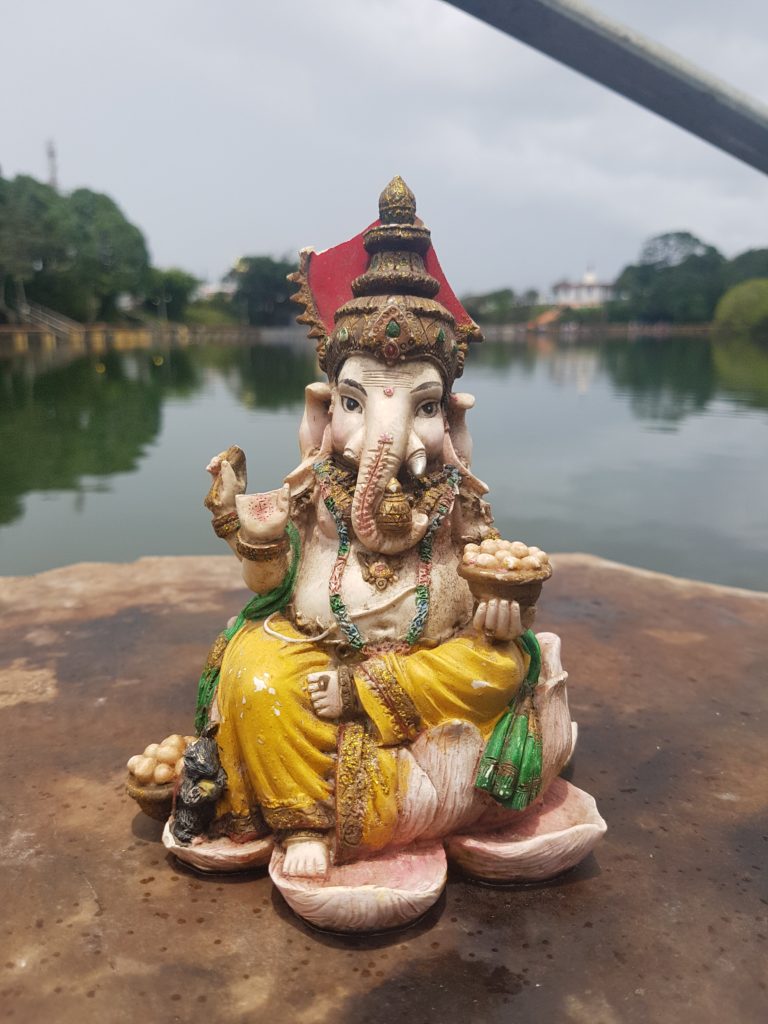


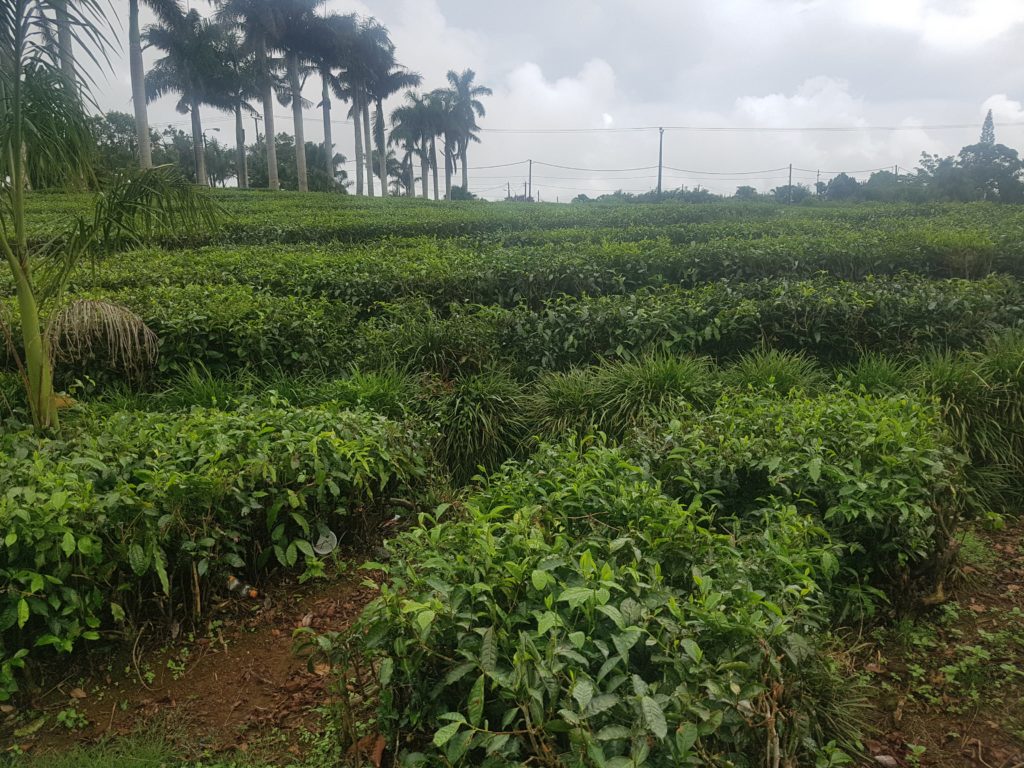
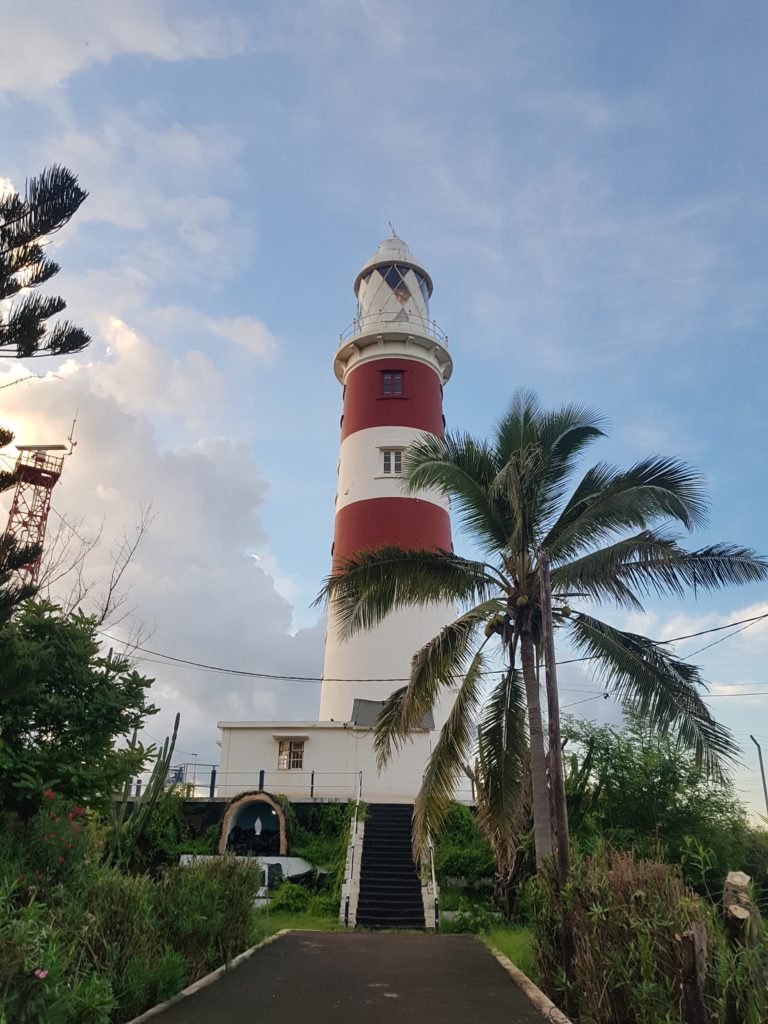
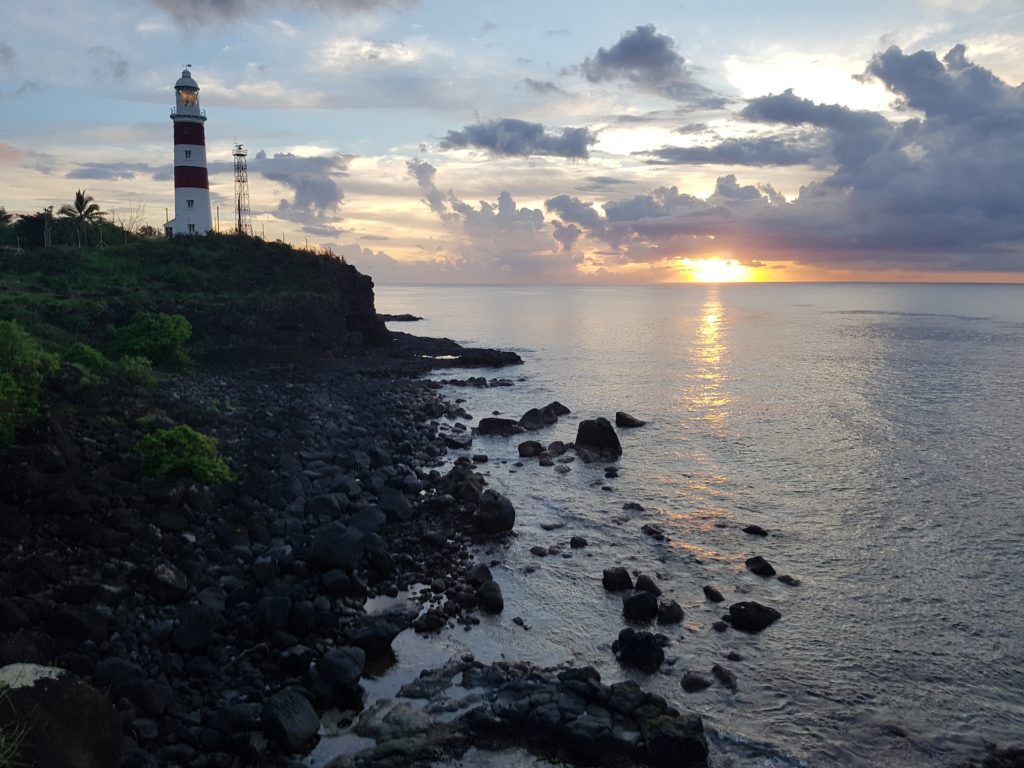
Travel recommendations
Apps
- Bus routes – An offline application that helps you find bus routes. However, you need to know your starting and destination points. Alternatively, you can ask the locals for help, as they are usually happy to assist.
- Maps.me – For navigation around the island, it is best to download an application with openstreetmap (OSM), which has the most details. You will find the most roads, including those that Google Maps doesn’t show. You can download regions offline in the app. Unfortunately, the free version does not show contour lines, but it does include comments on some places on the map.
- Mapy.cz – Czech maps have excellent features. They are offline, detailed (not as much as OSM), and have navigation options, making offline navigation excellent if you are traveling by car.
What not to forget to pack
- Repellent – If you plan on visiting forests and parks, it will definitely come in handy. Predator repellent is the best option.
- Sunscreen – The sun is hot, and even during the European winter, you may burn even with sunscreen on. It still tans in the rain. Choose a sunscreen with SPF 50 for best protection.
- Panthenol – For any possible burns.
- Raincoat – Showers can happen throughout the year. They are usually only local, so a raincoat or moving to another location is usually enough.
- Snorkeling gear – The island has beautiful parts of the ocean (described in the Beaches chapter) that hide beautiful coral and fish. Snorkeling is worth it.
- Digestive and diarrhea medicine – These are useful, as they are for travel outside of Europe.

